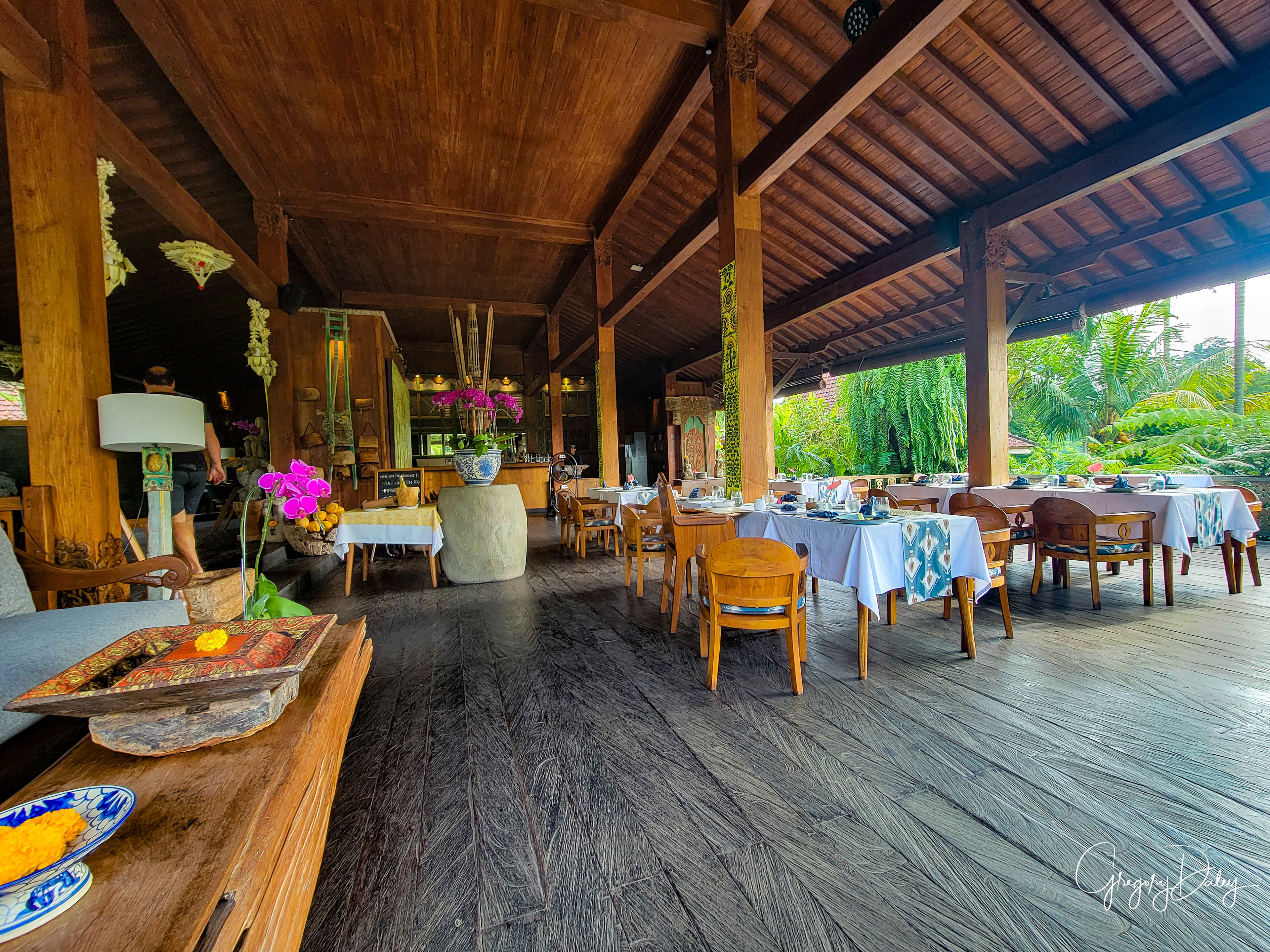
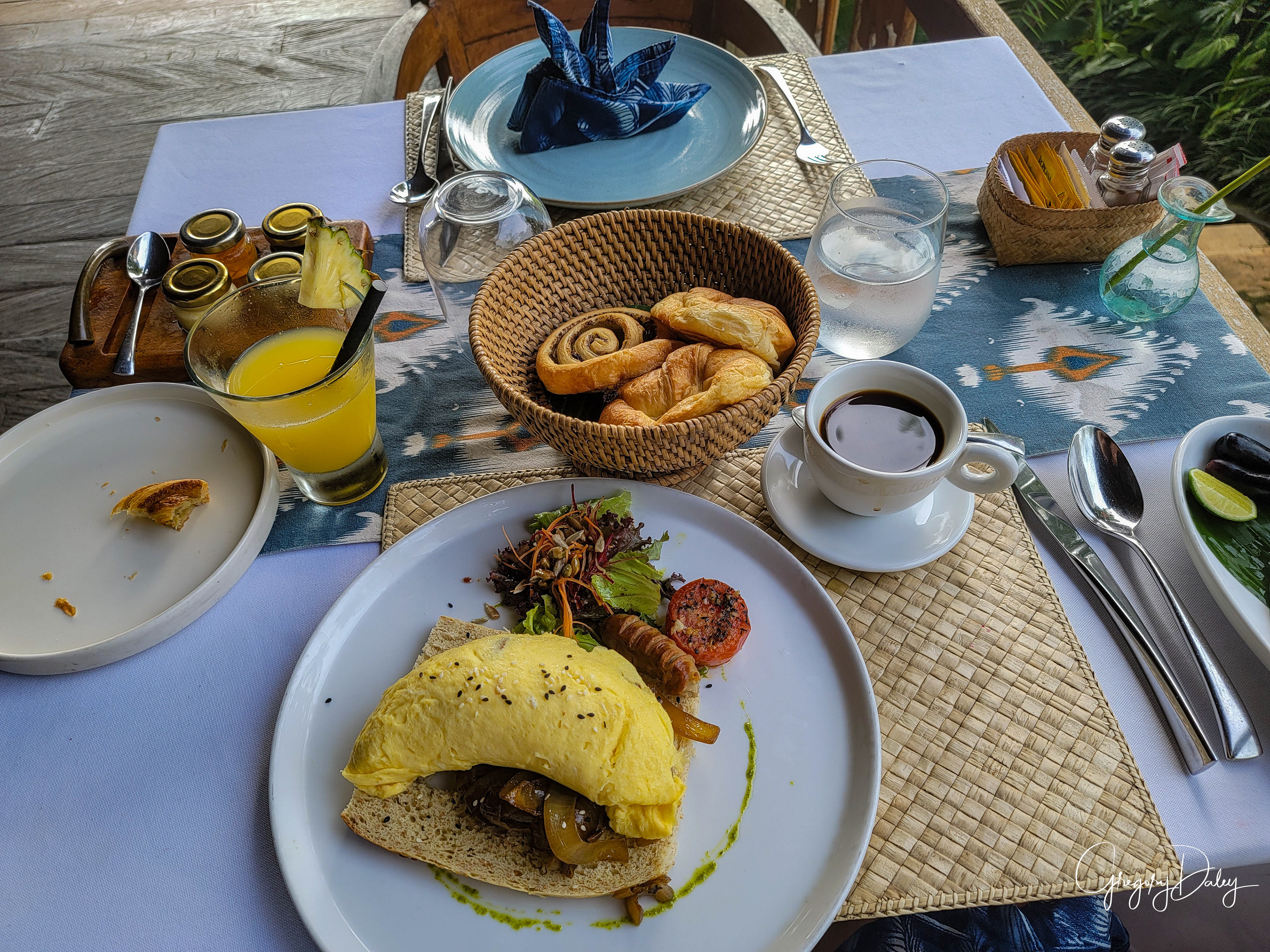
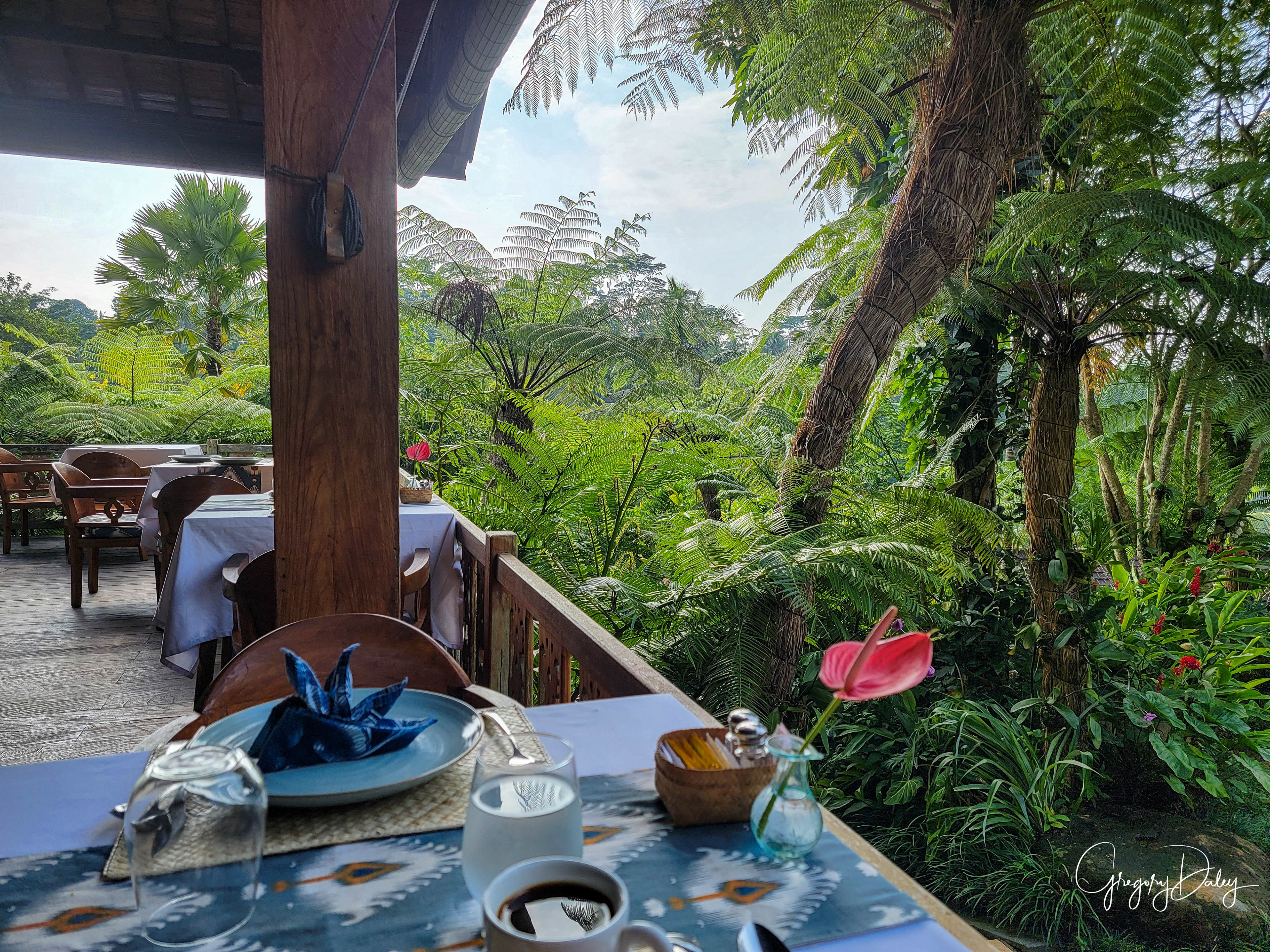
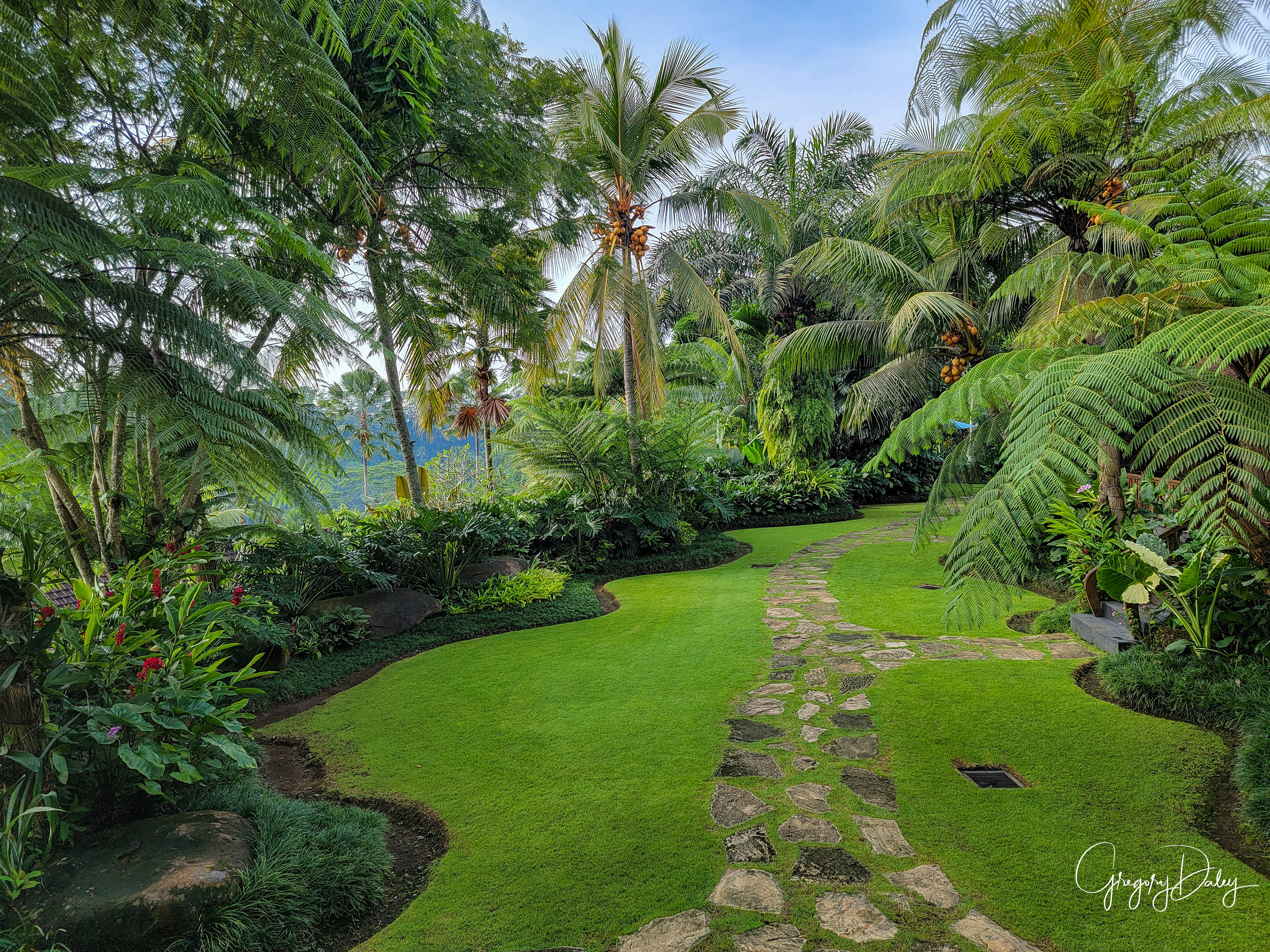

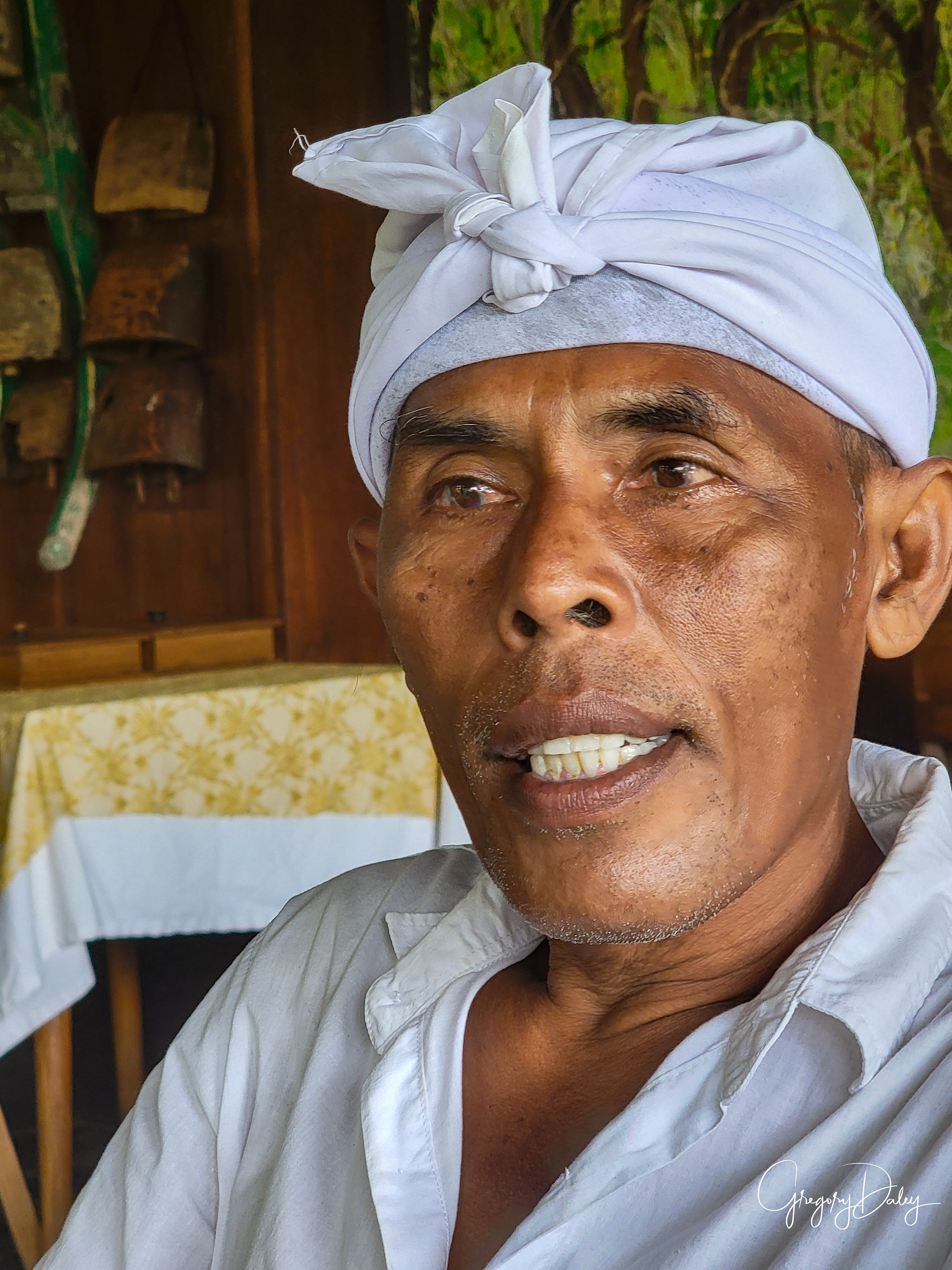
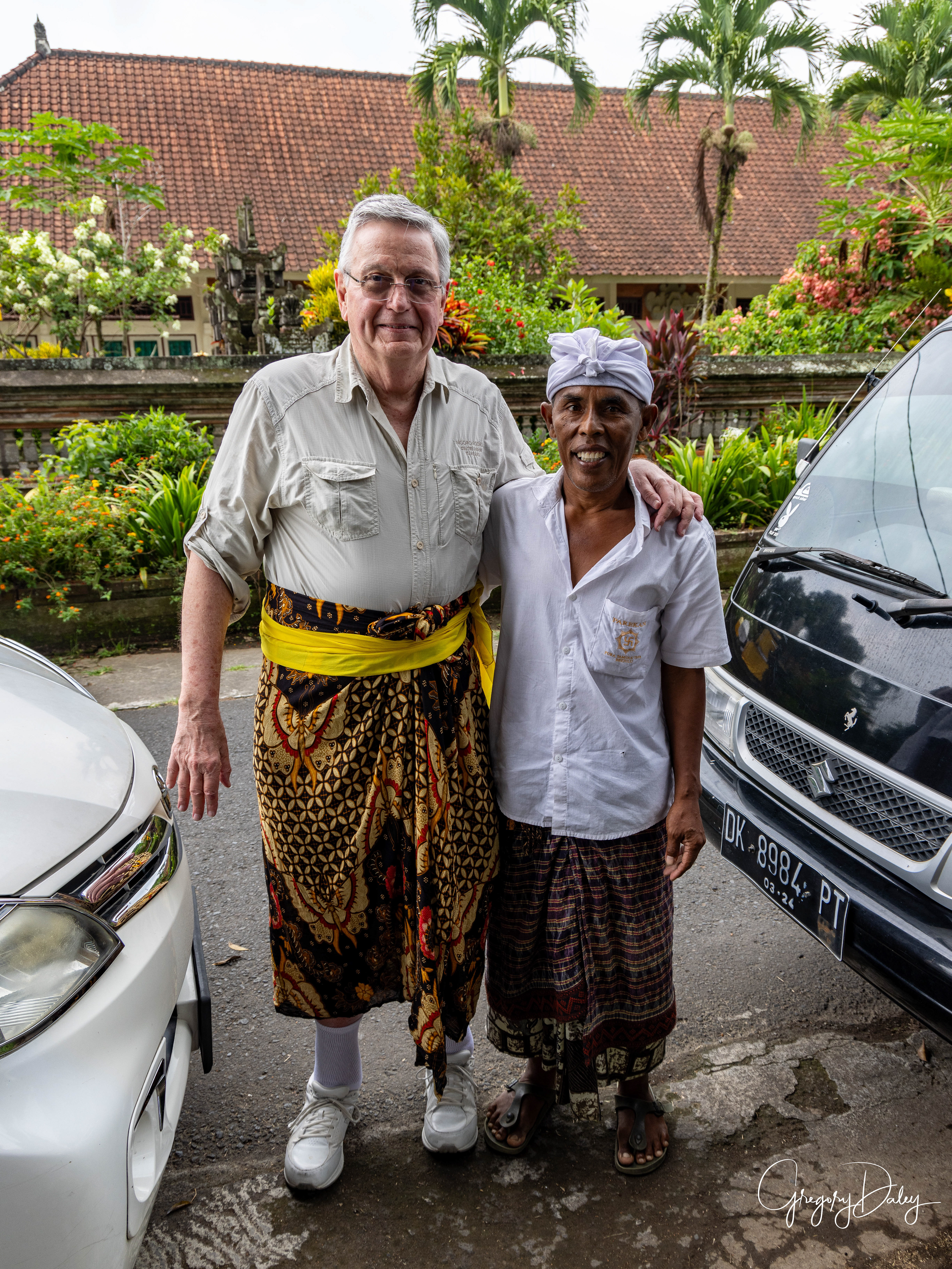
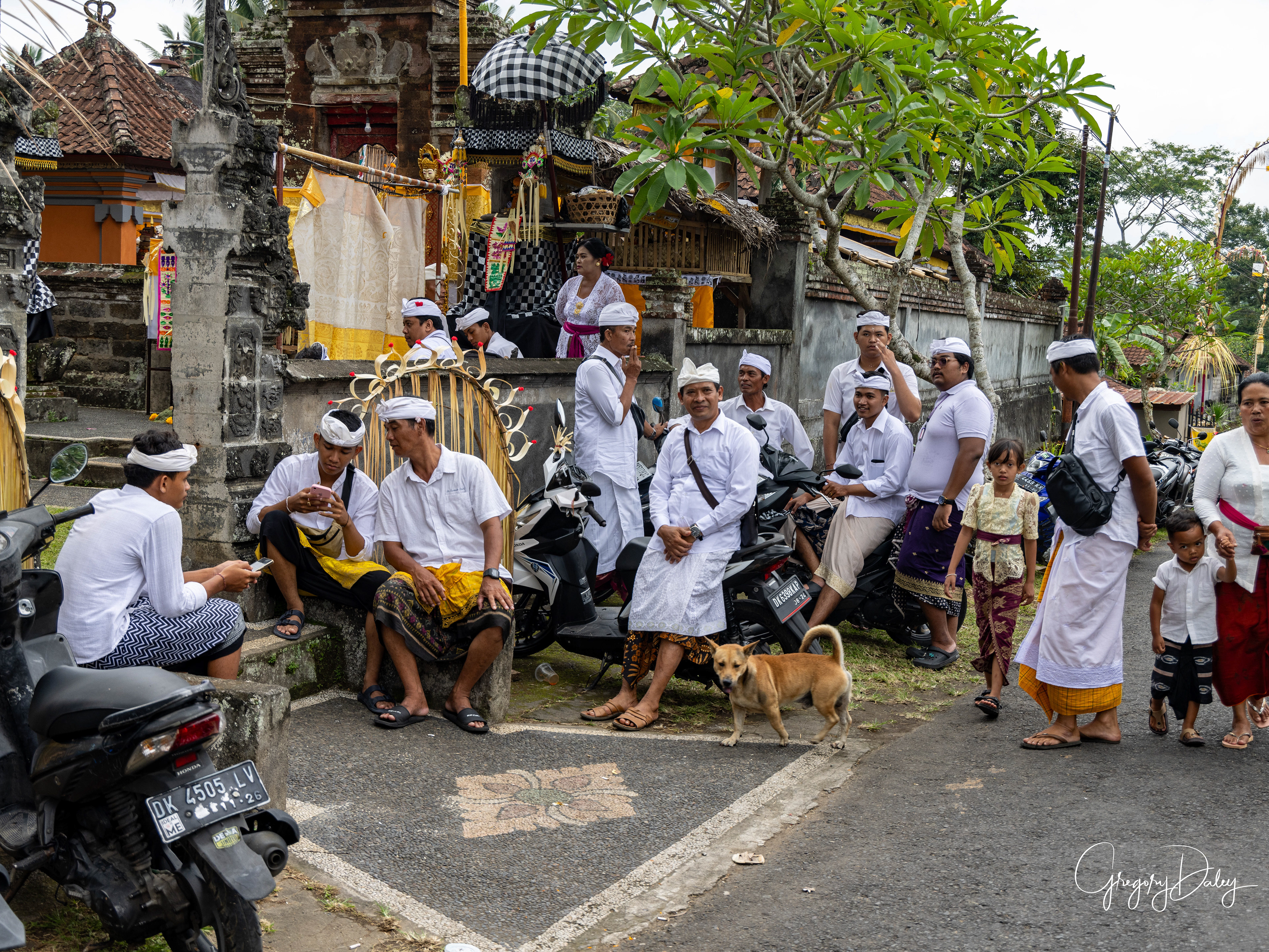
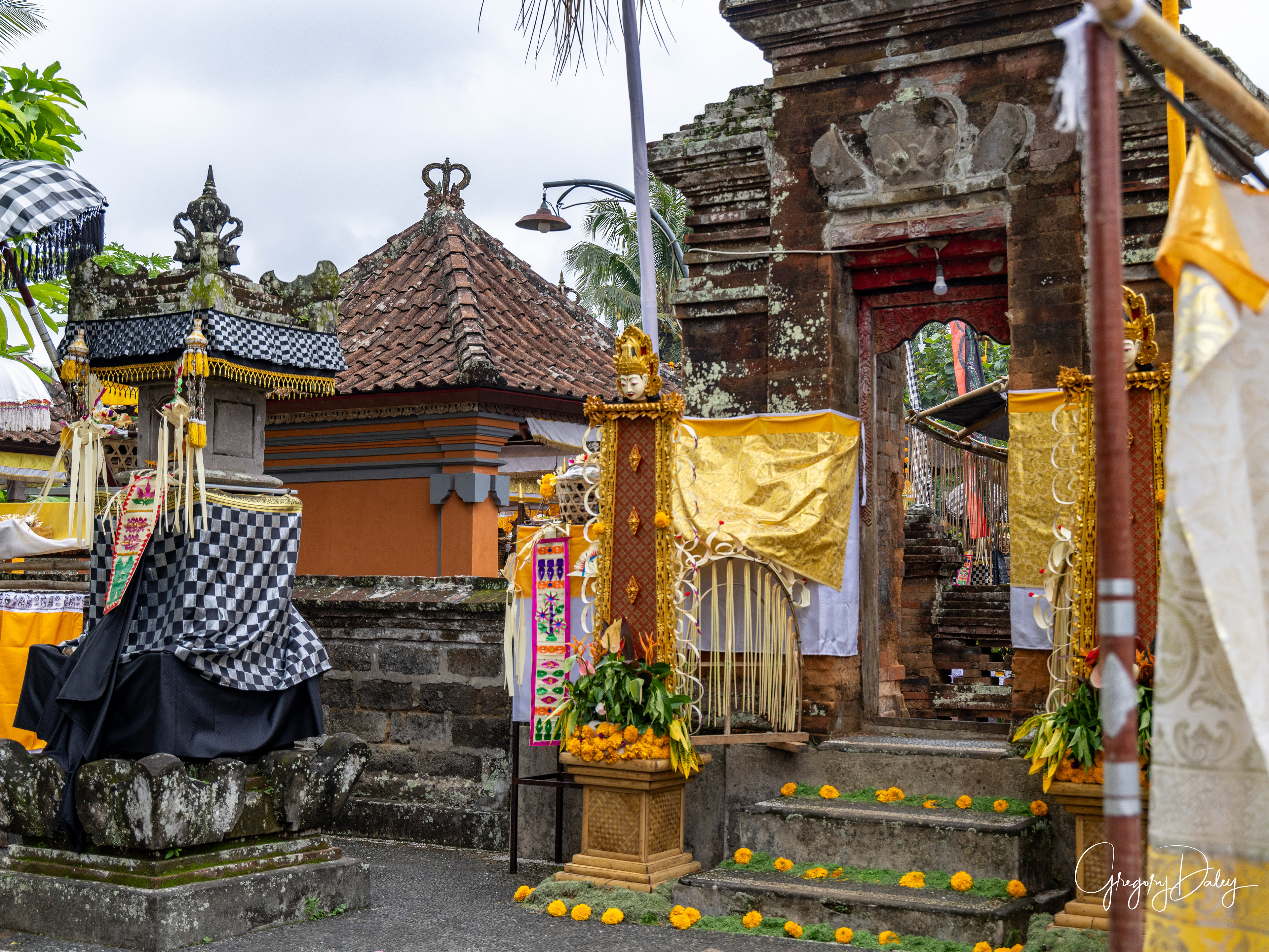
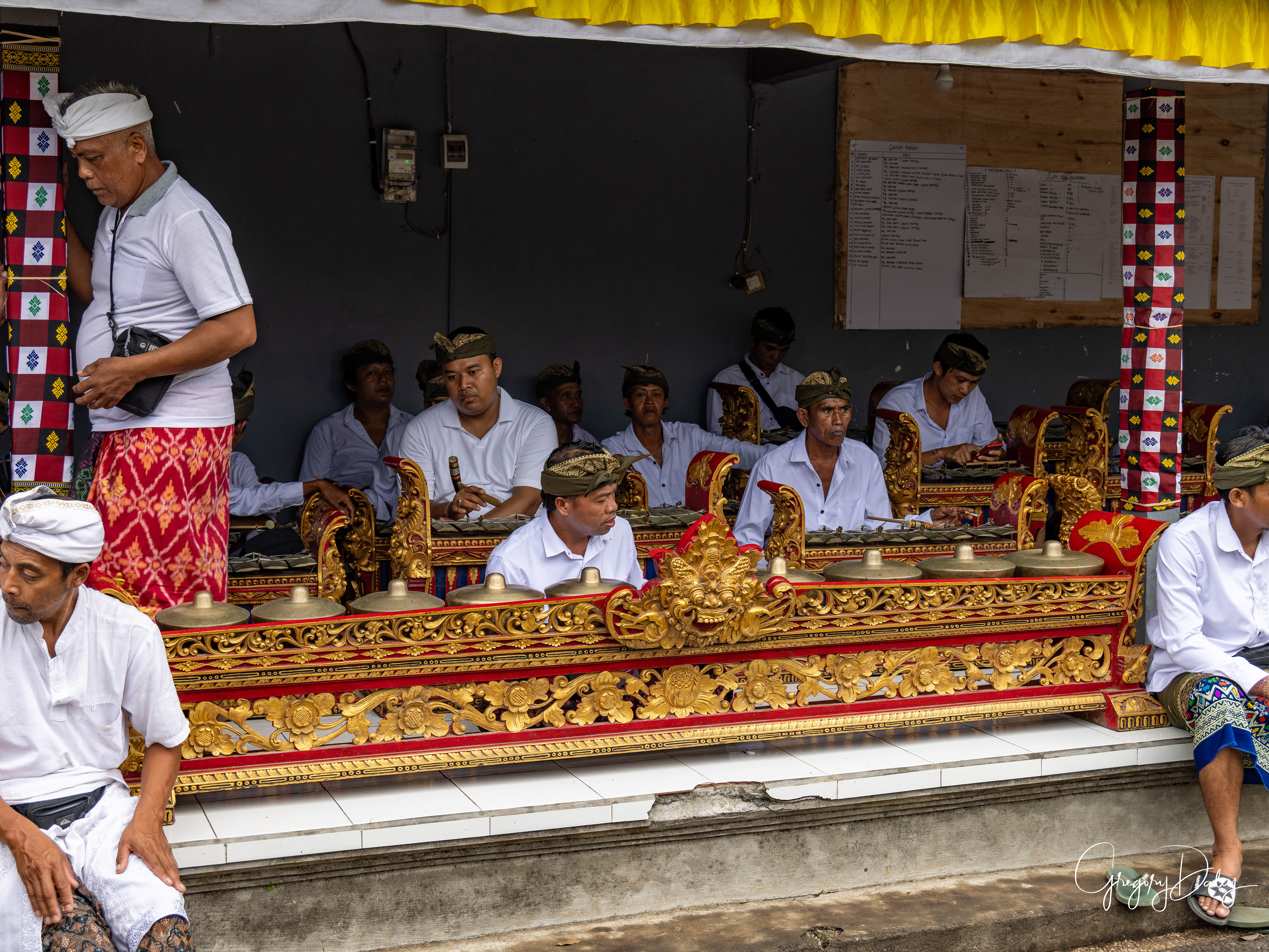
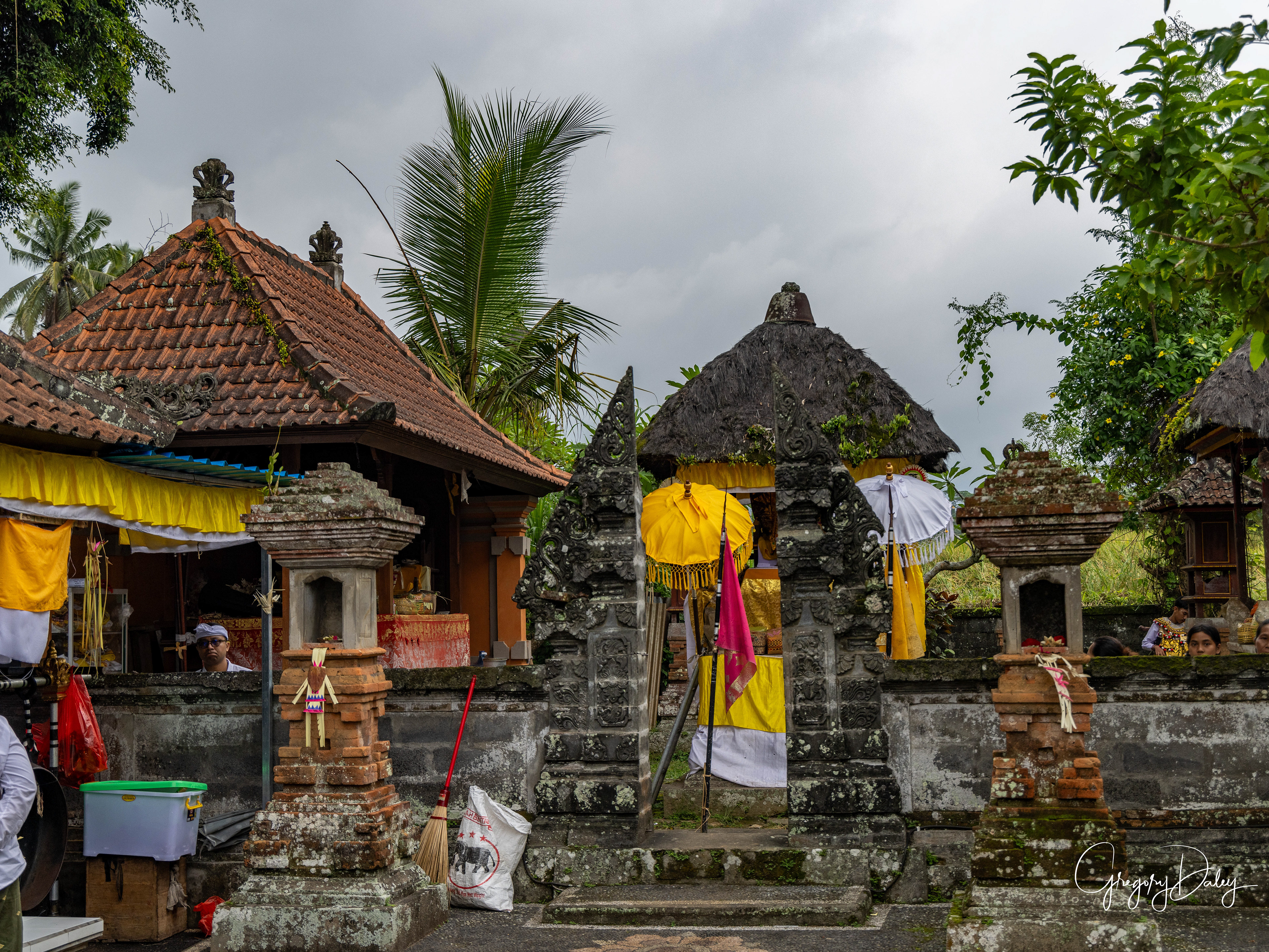
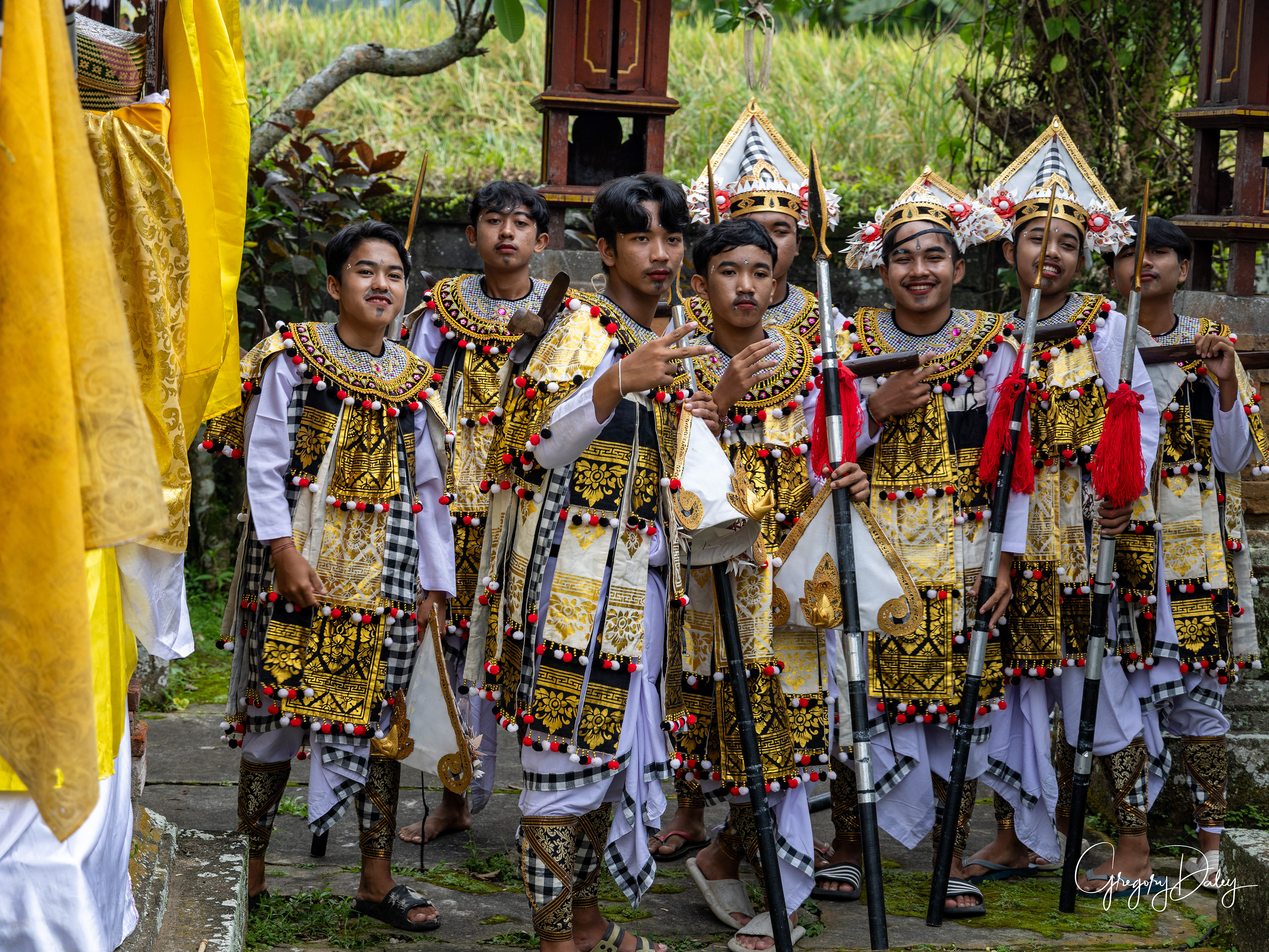
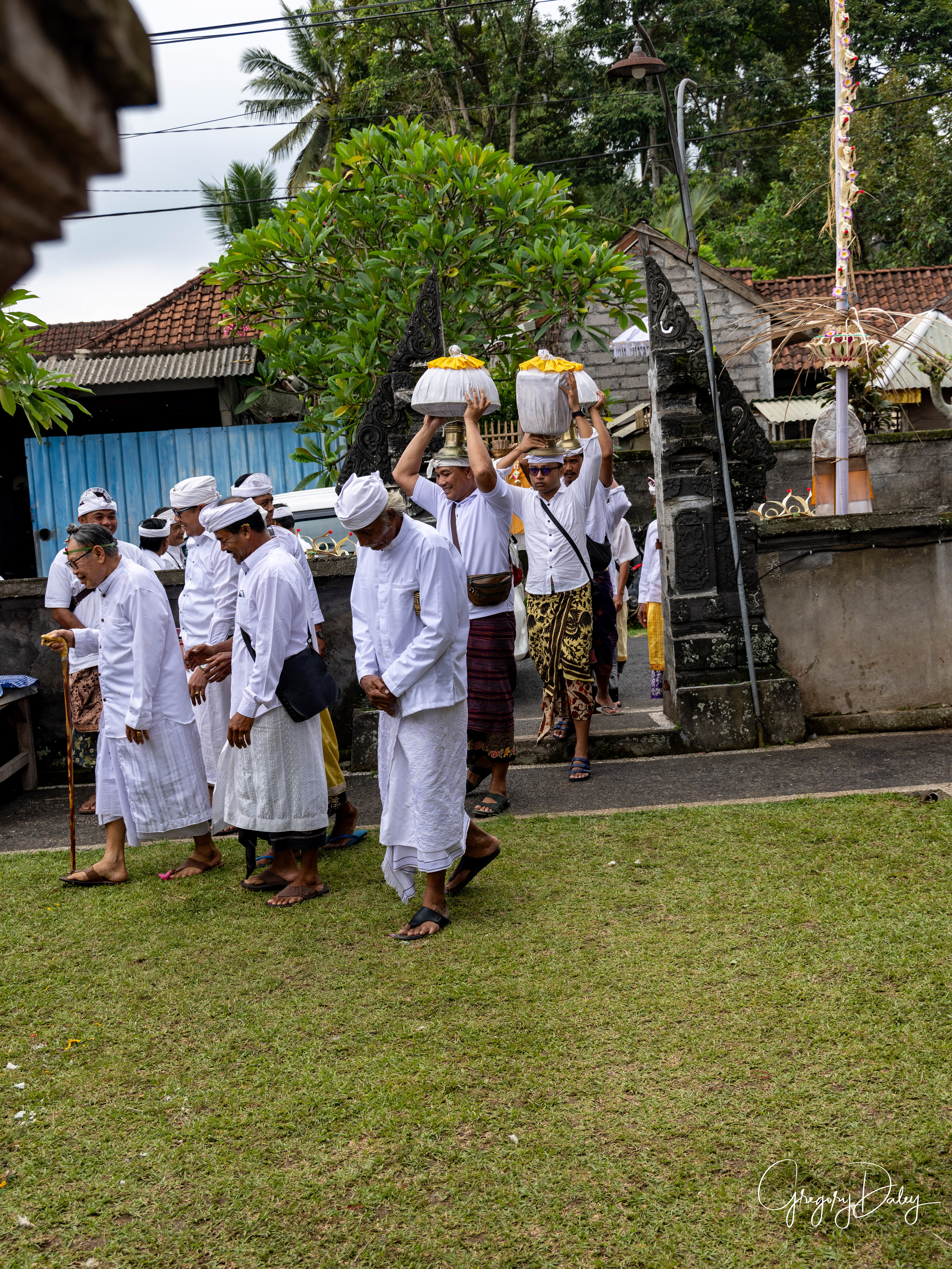
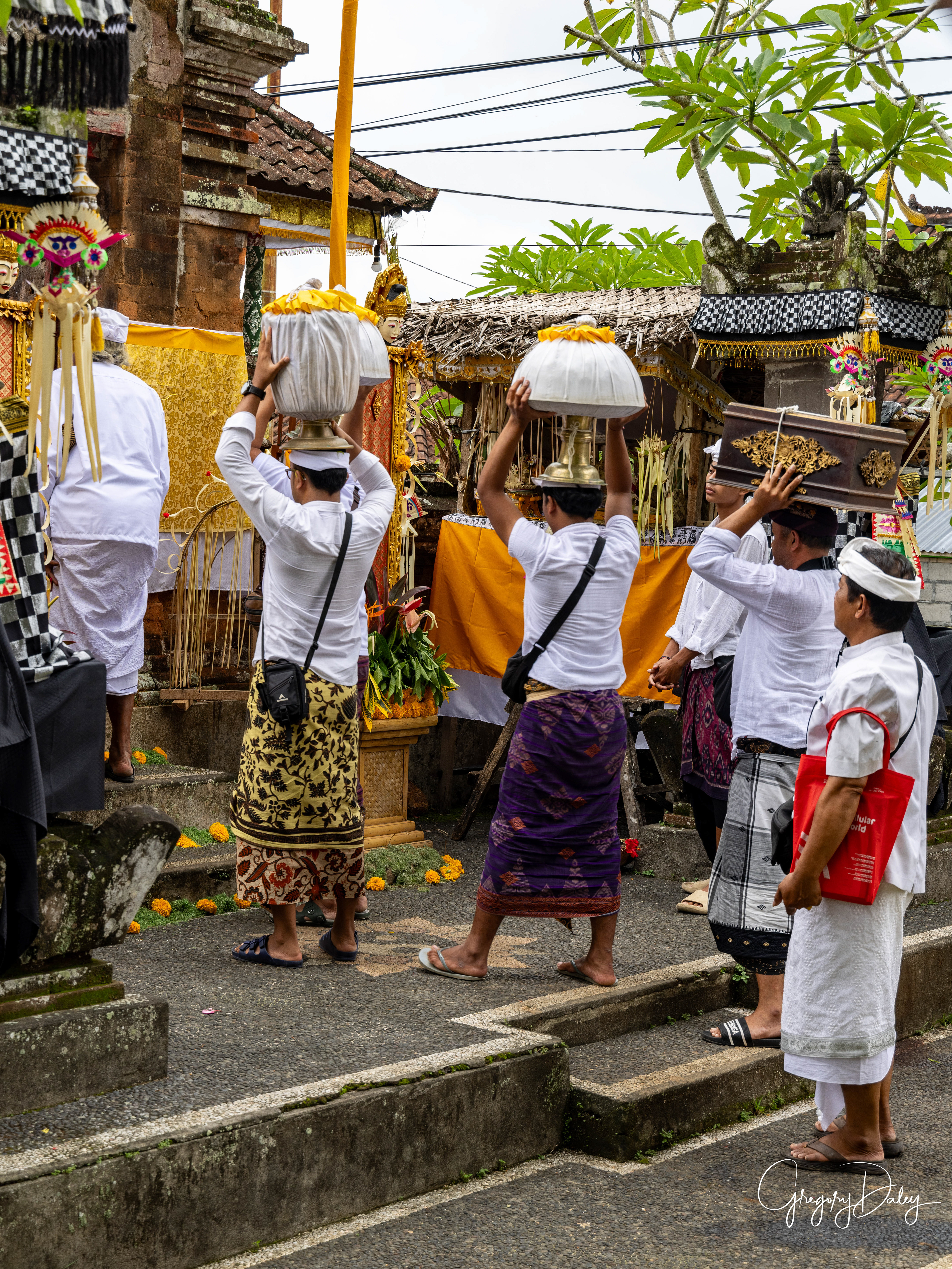
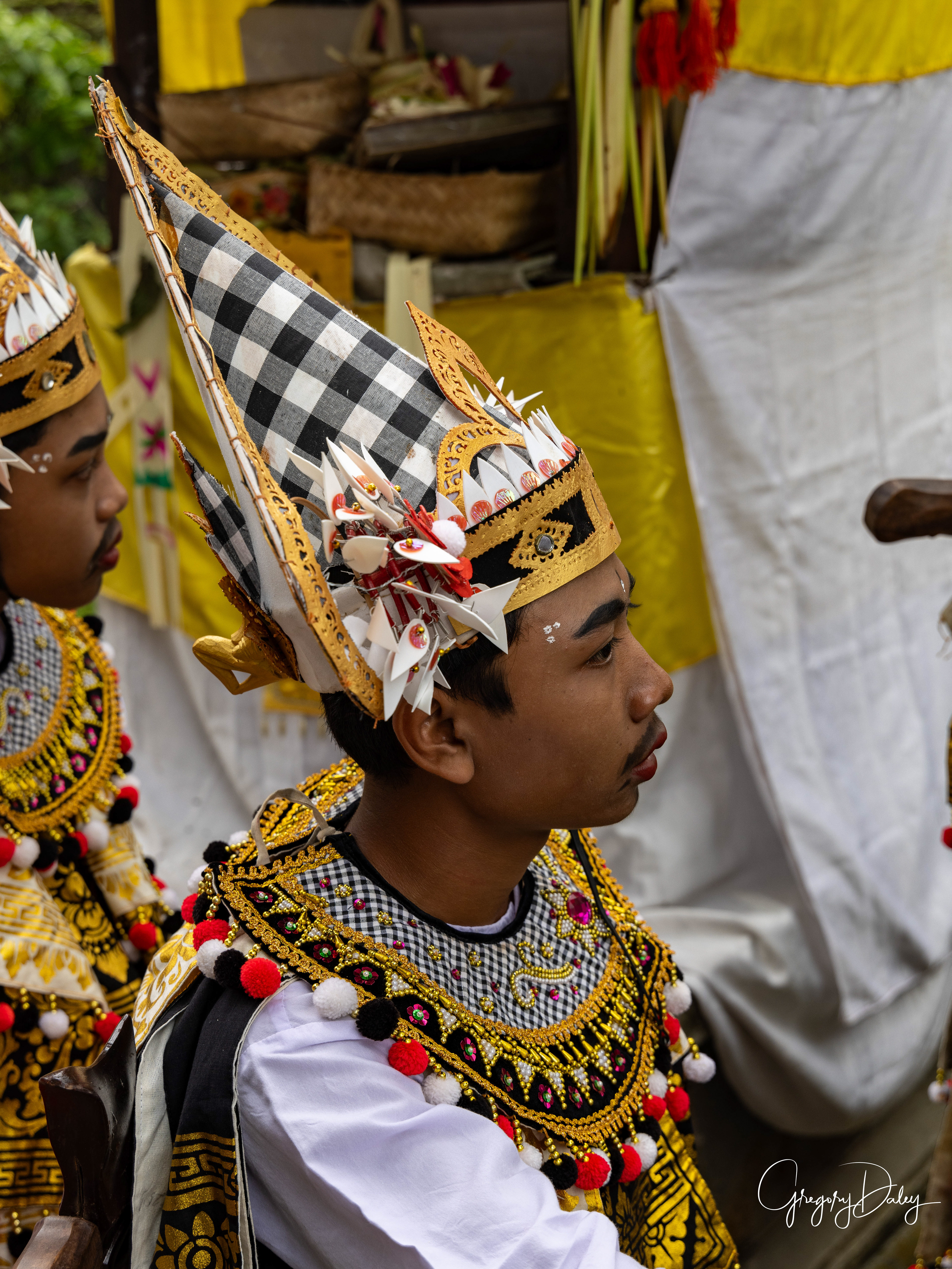

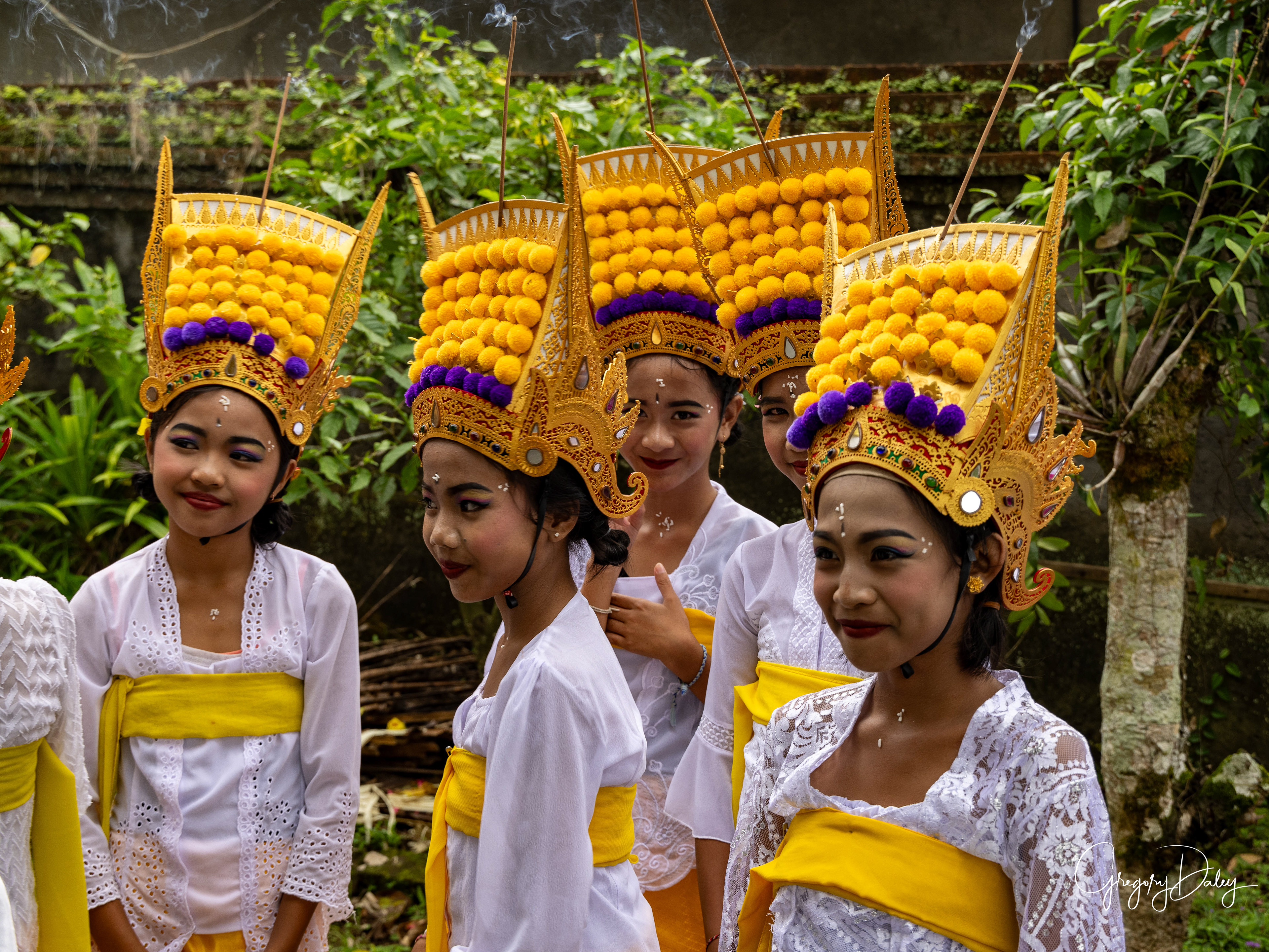
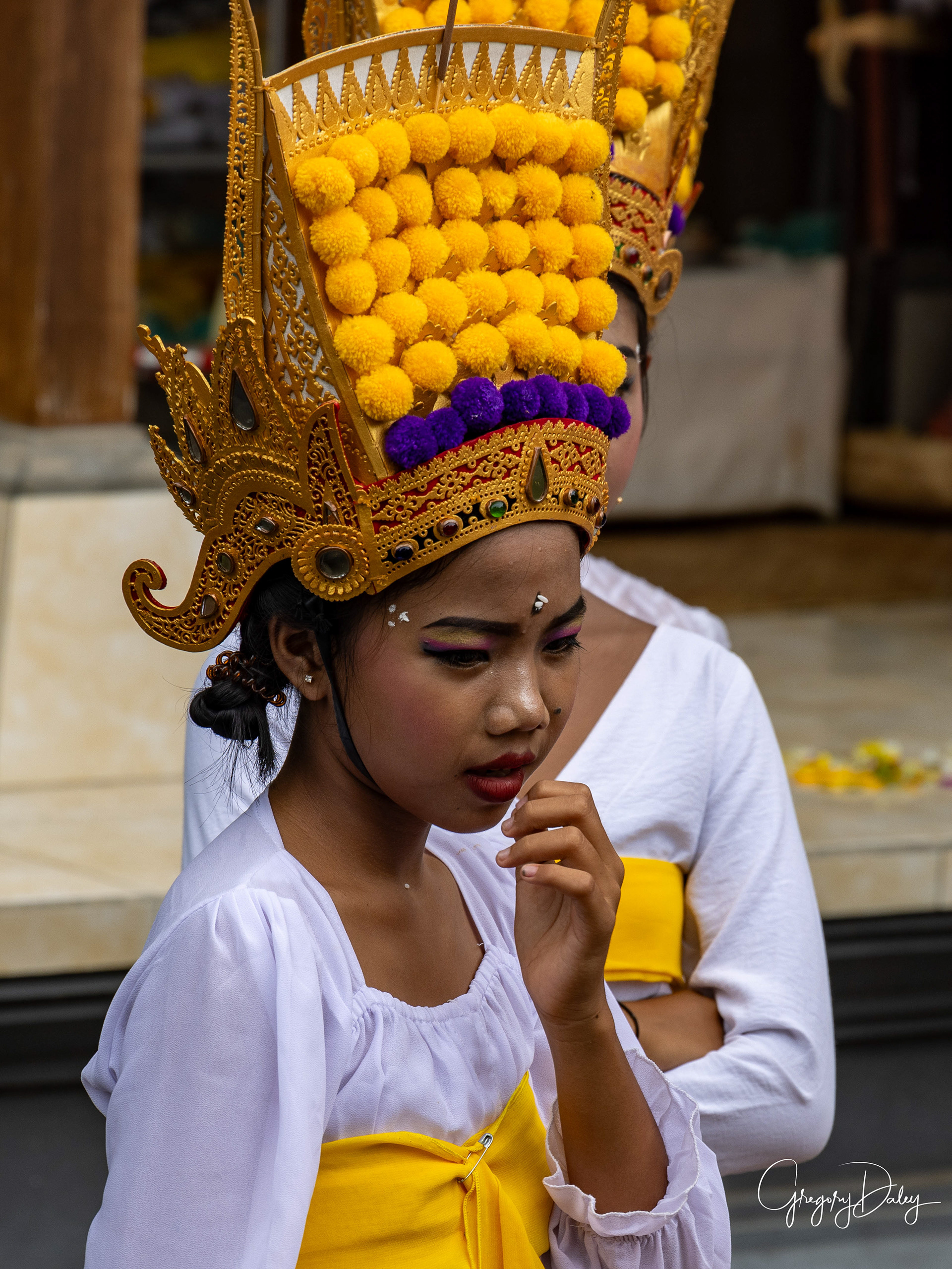
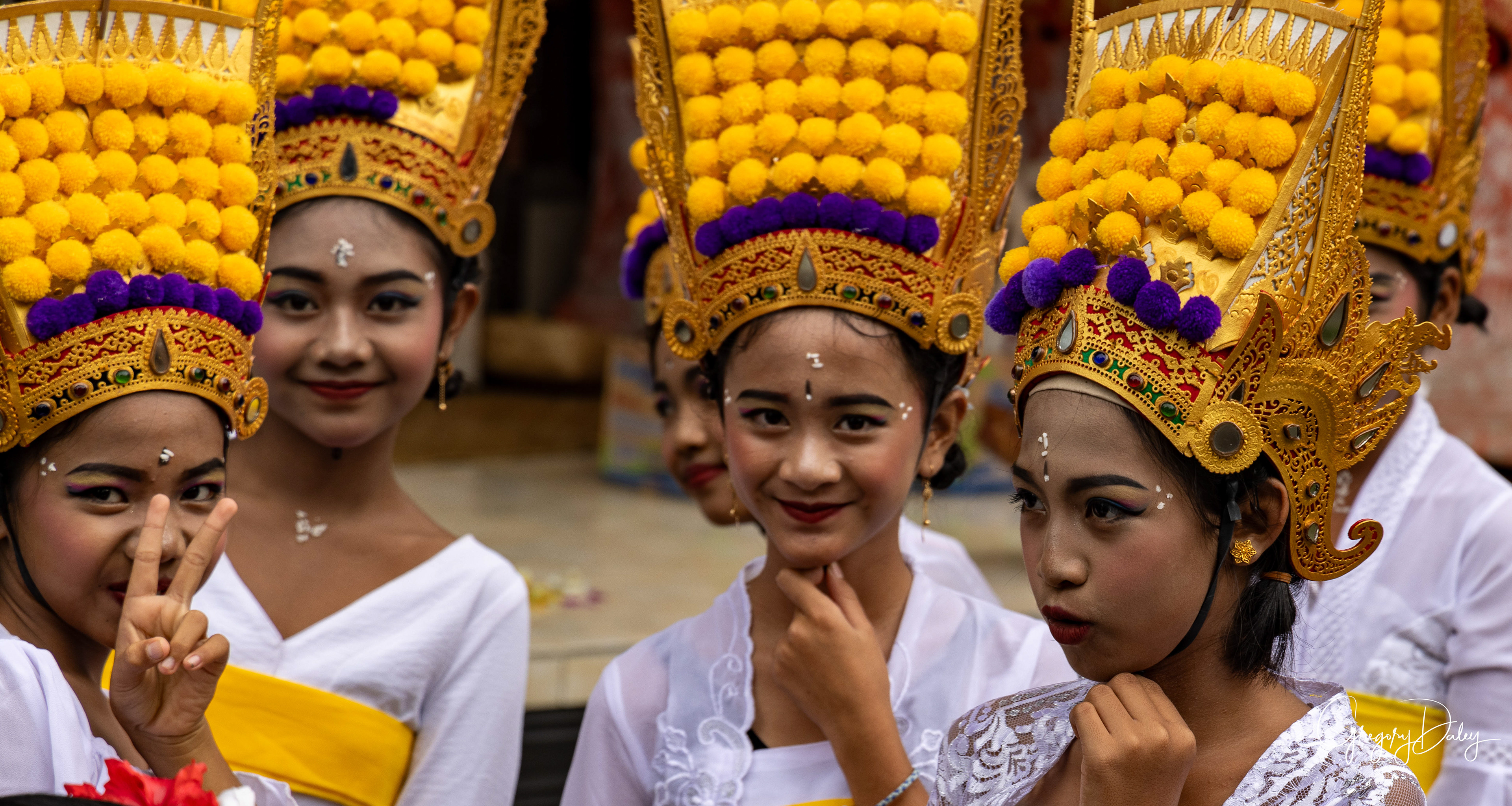
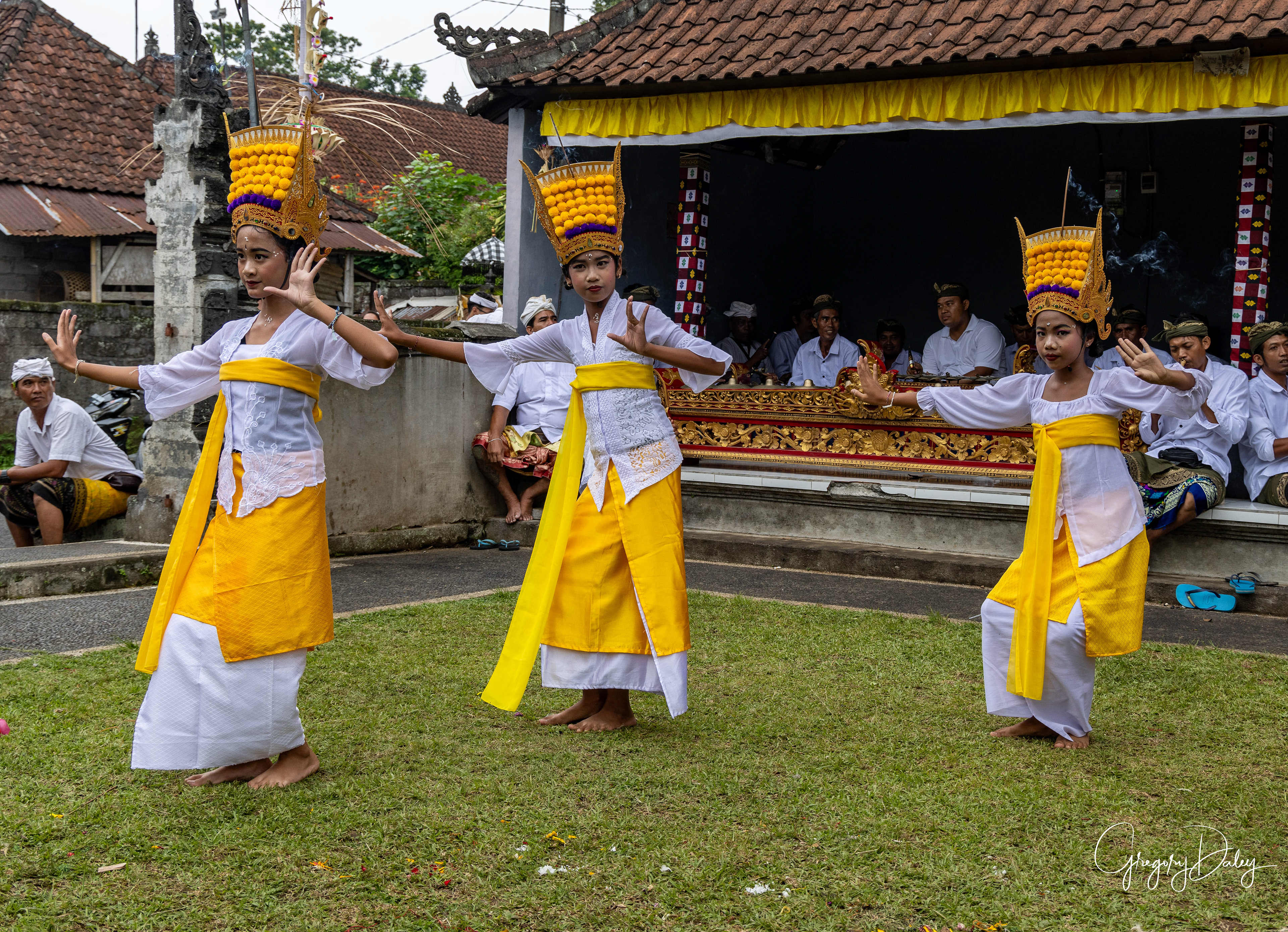
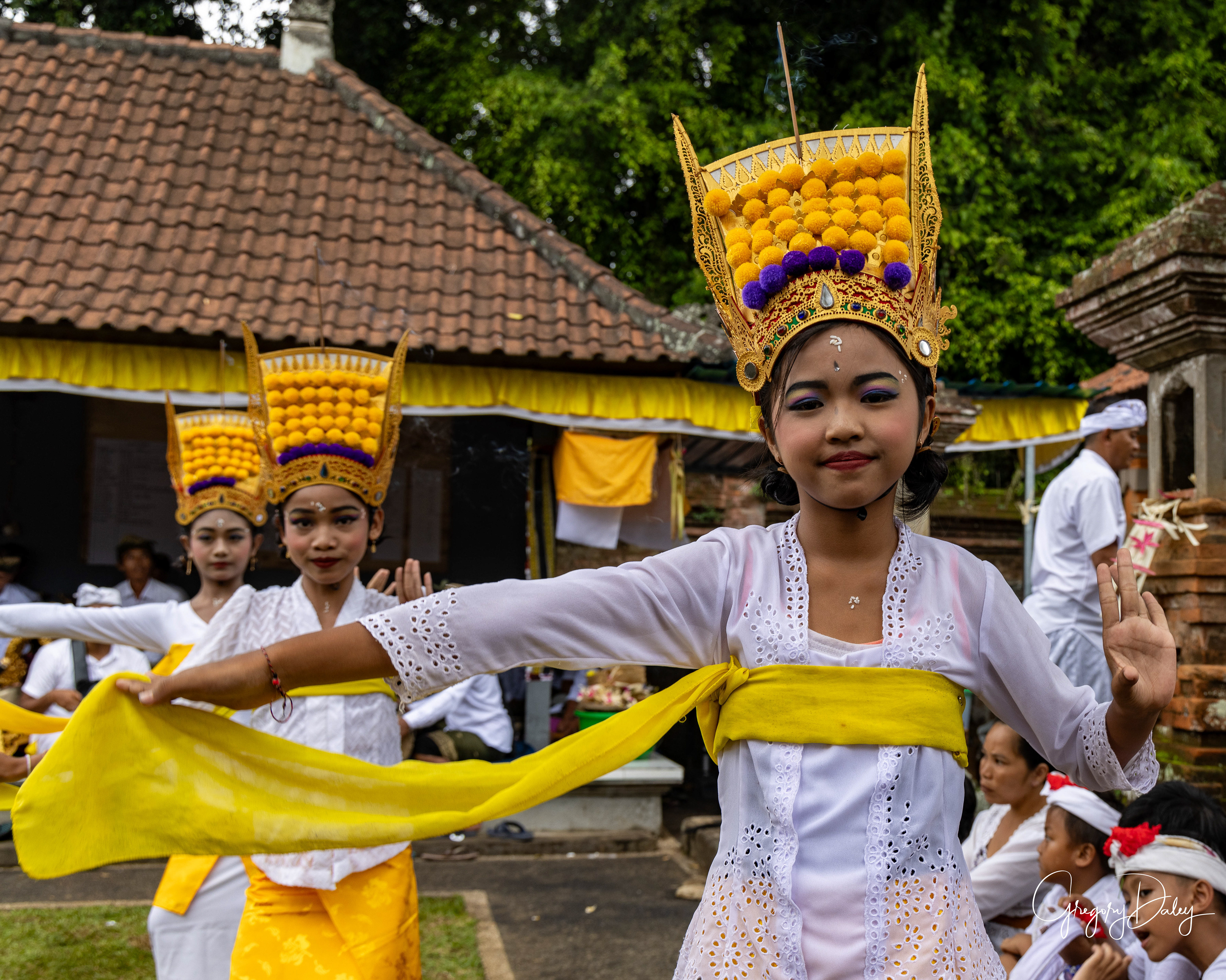
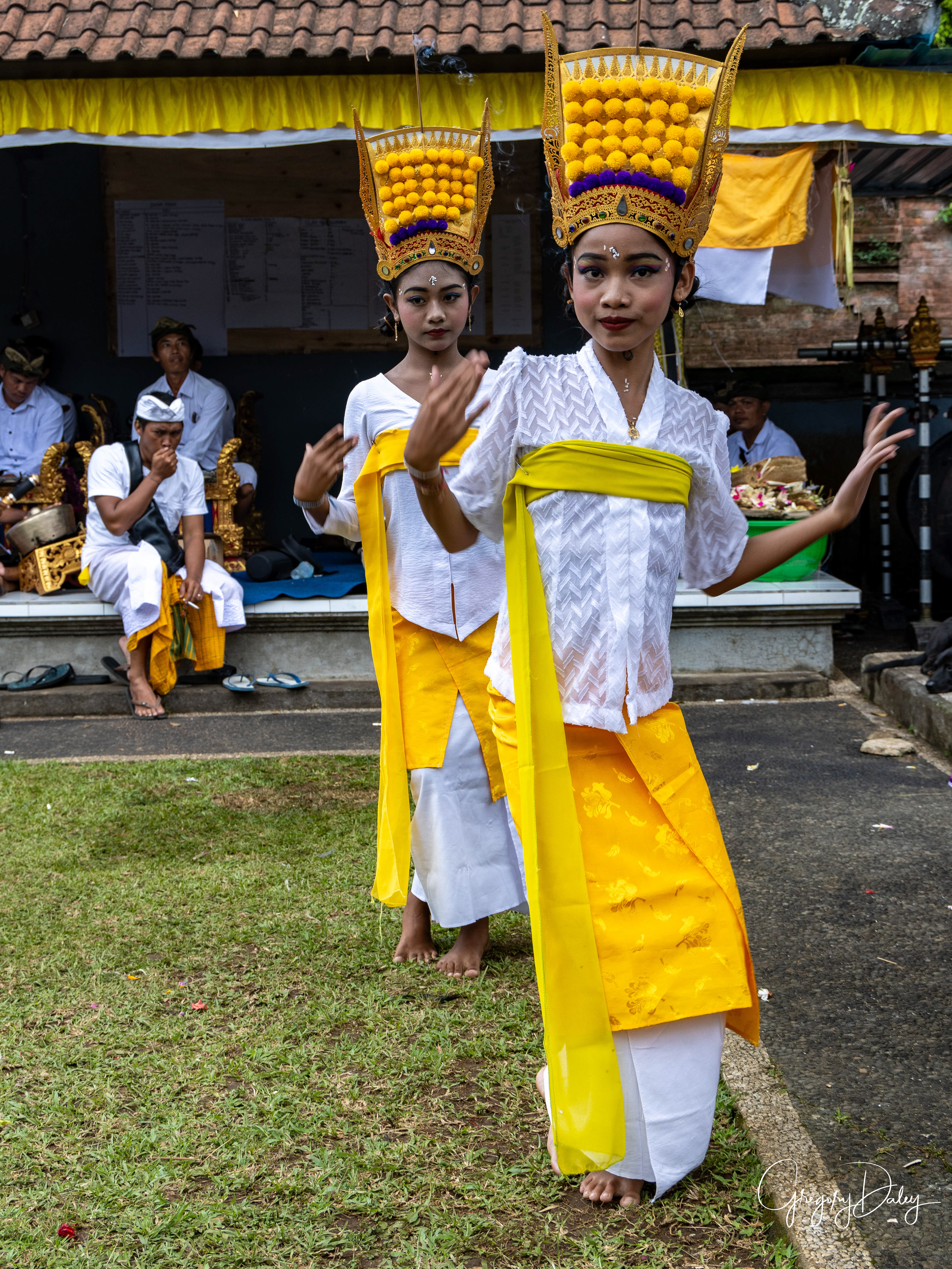

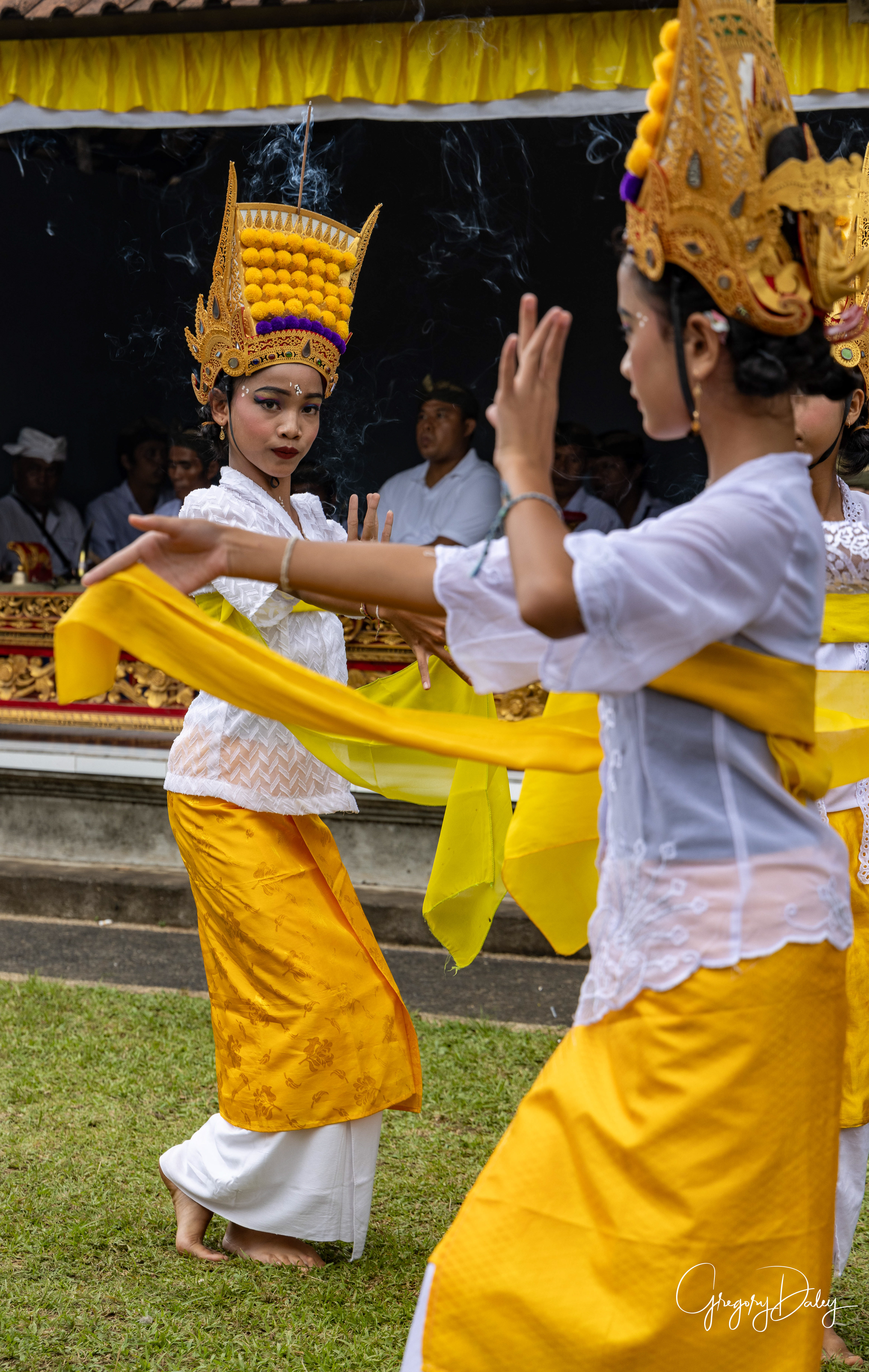
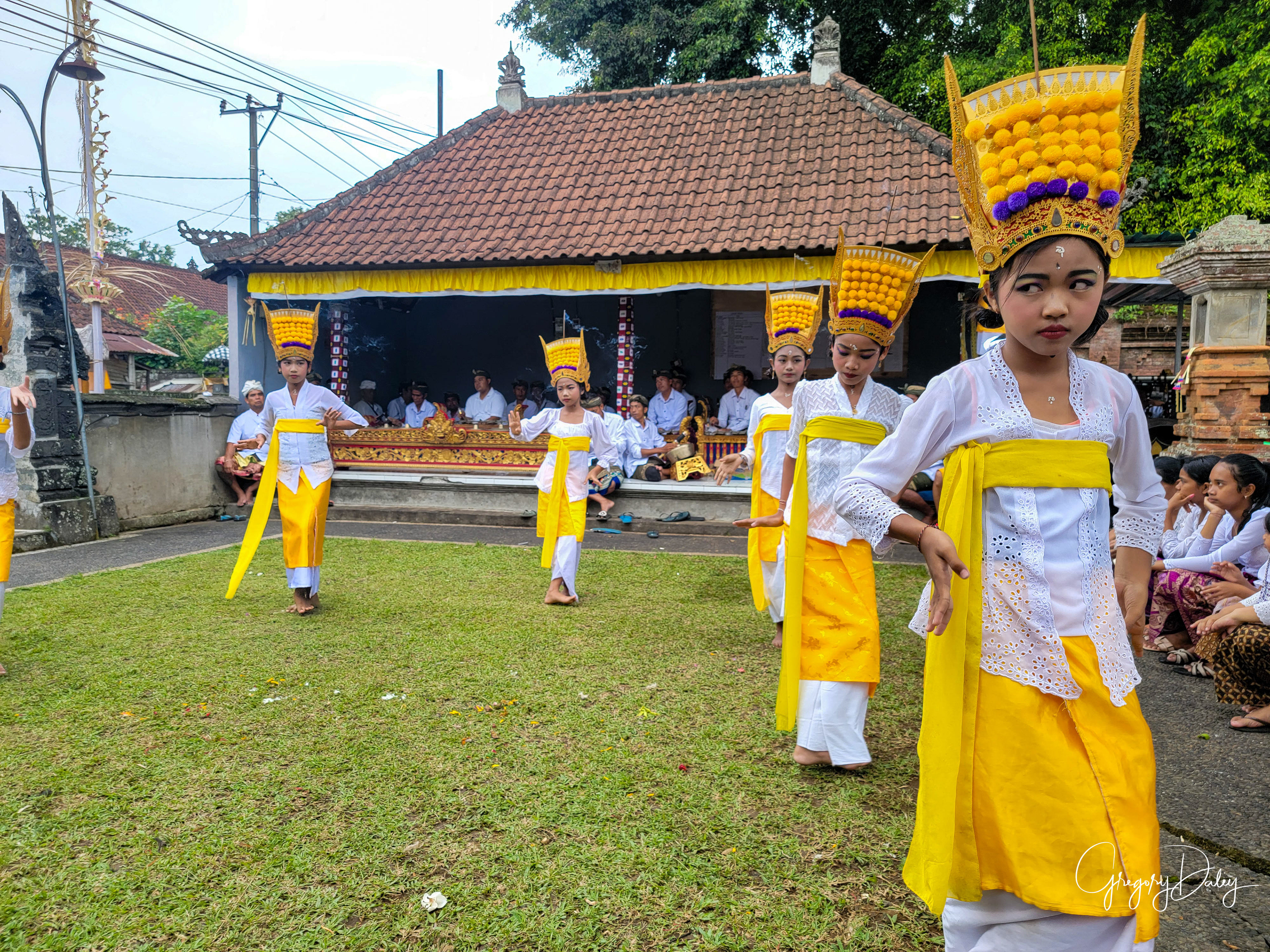
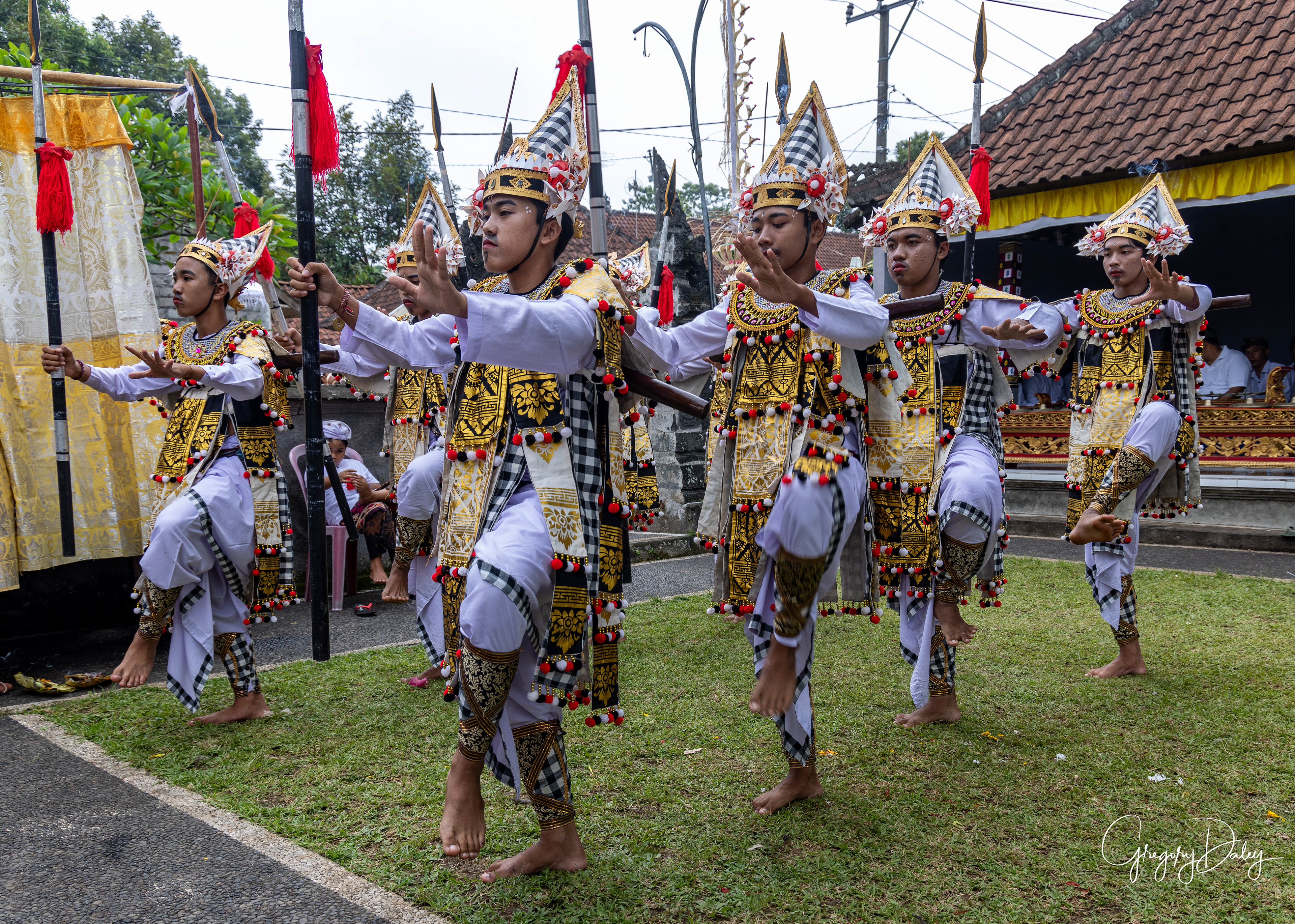
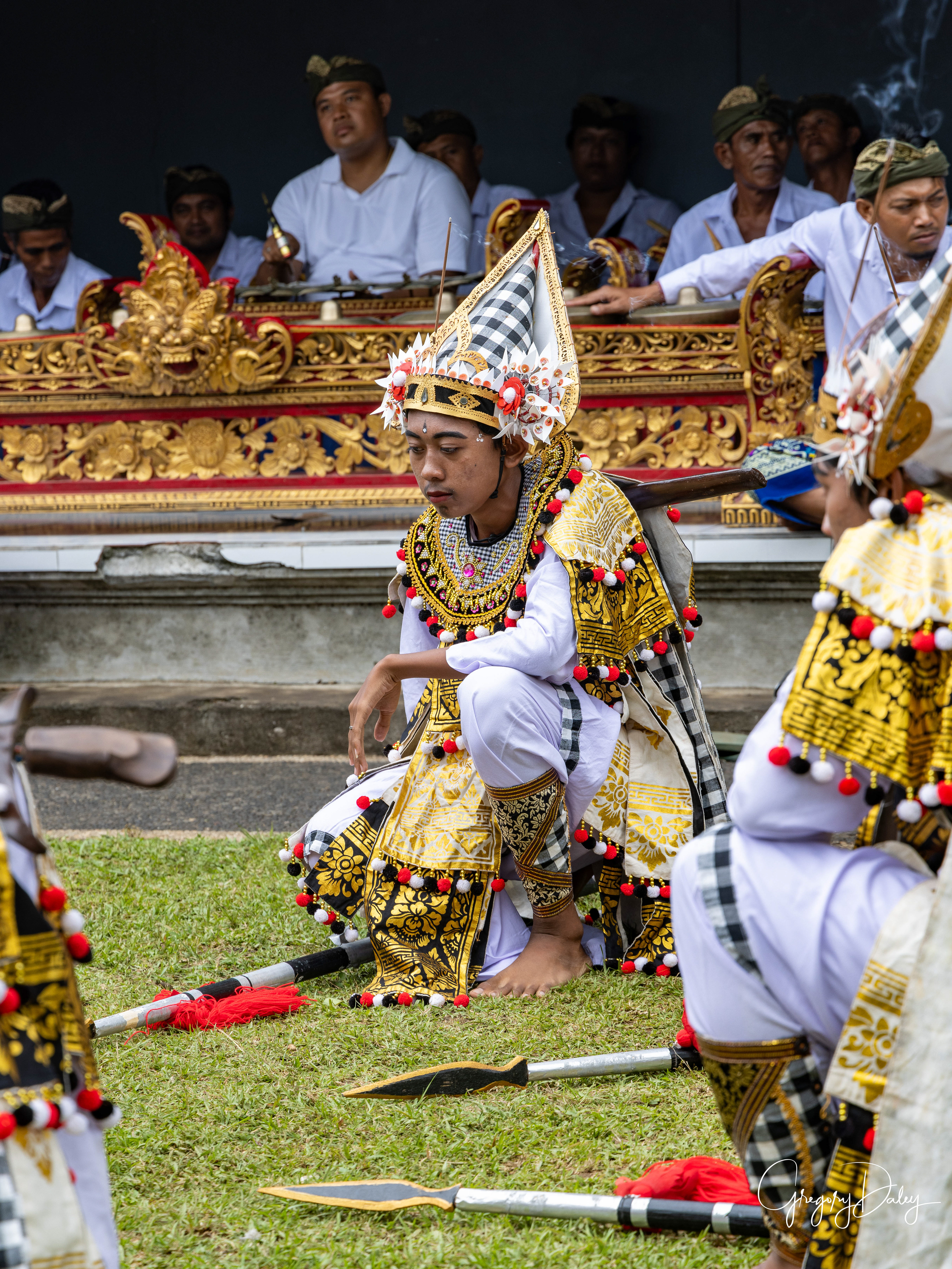
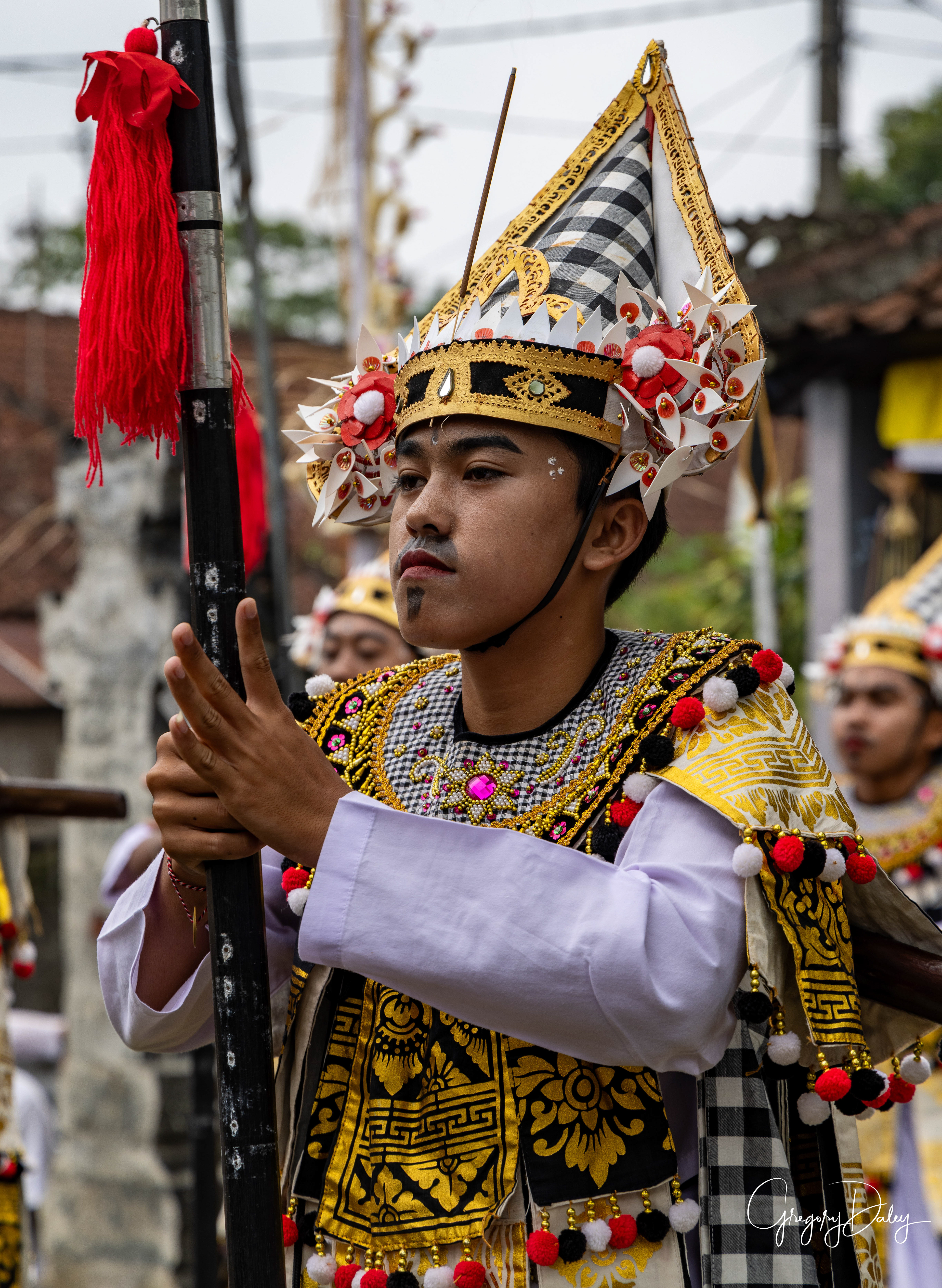
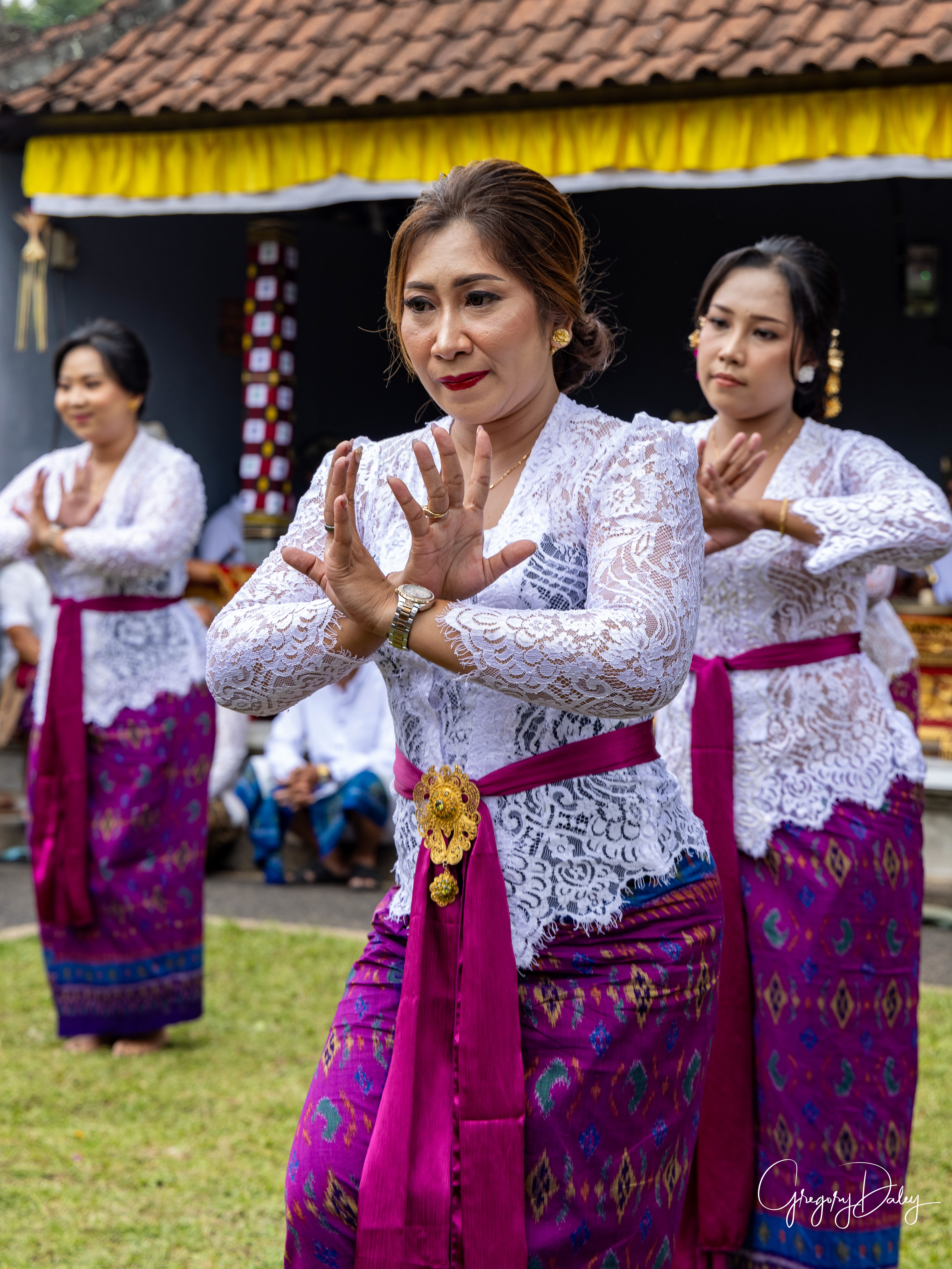
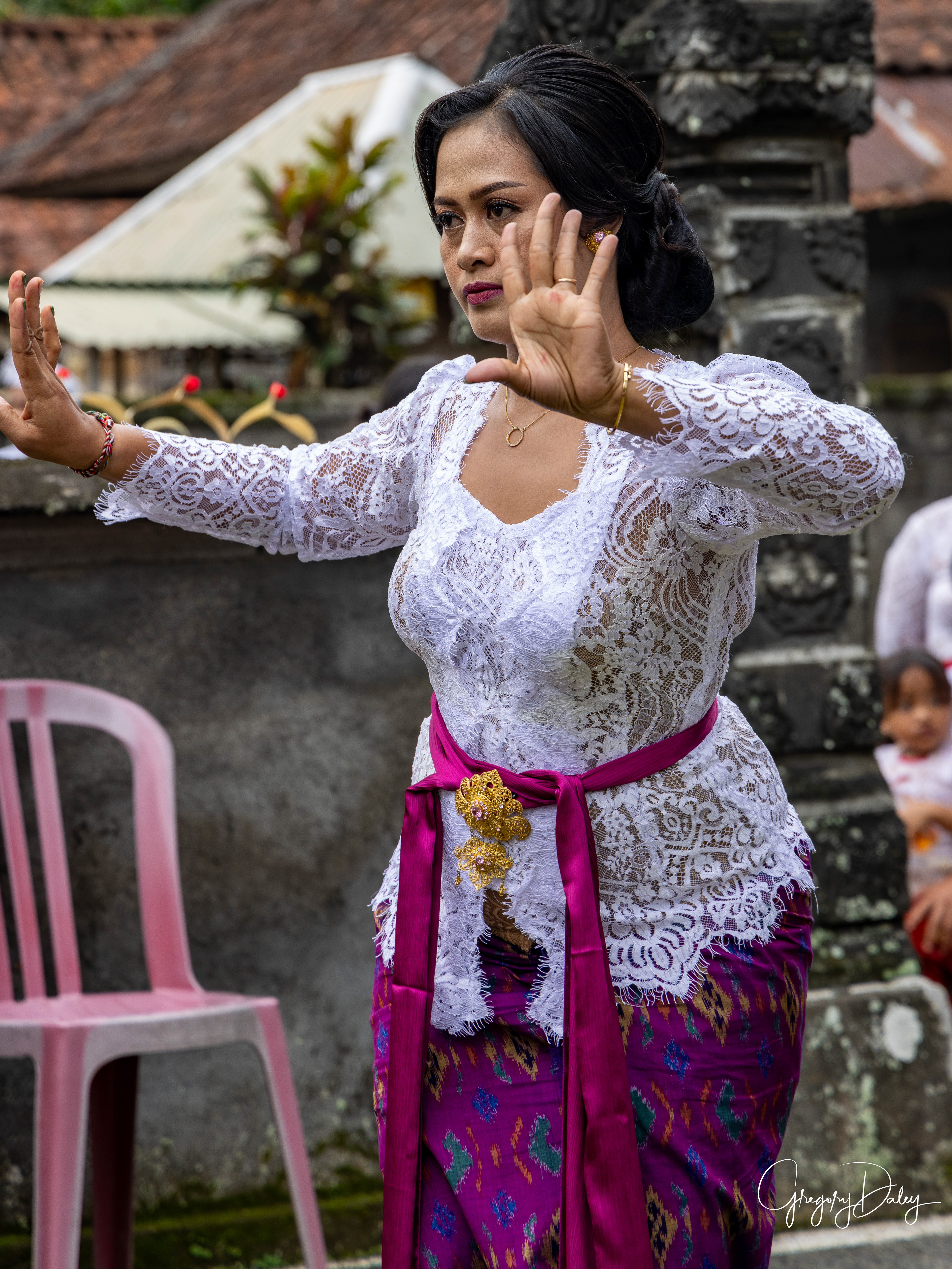
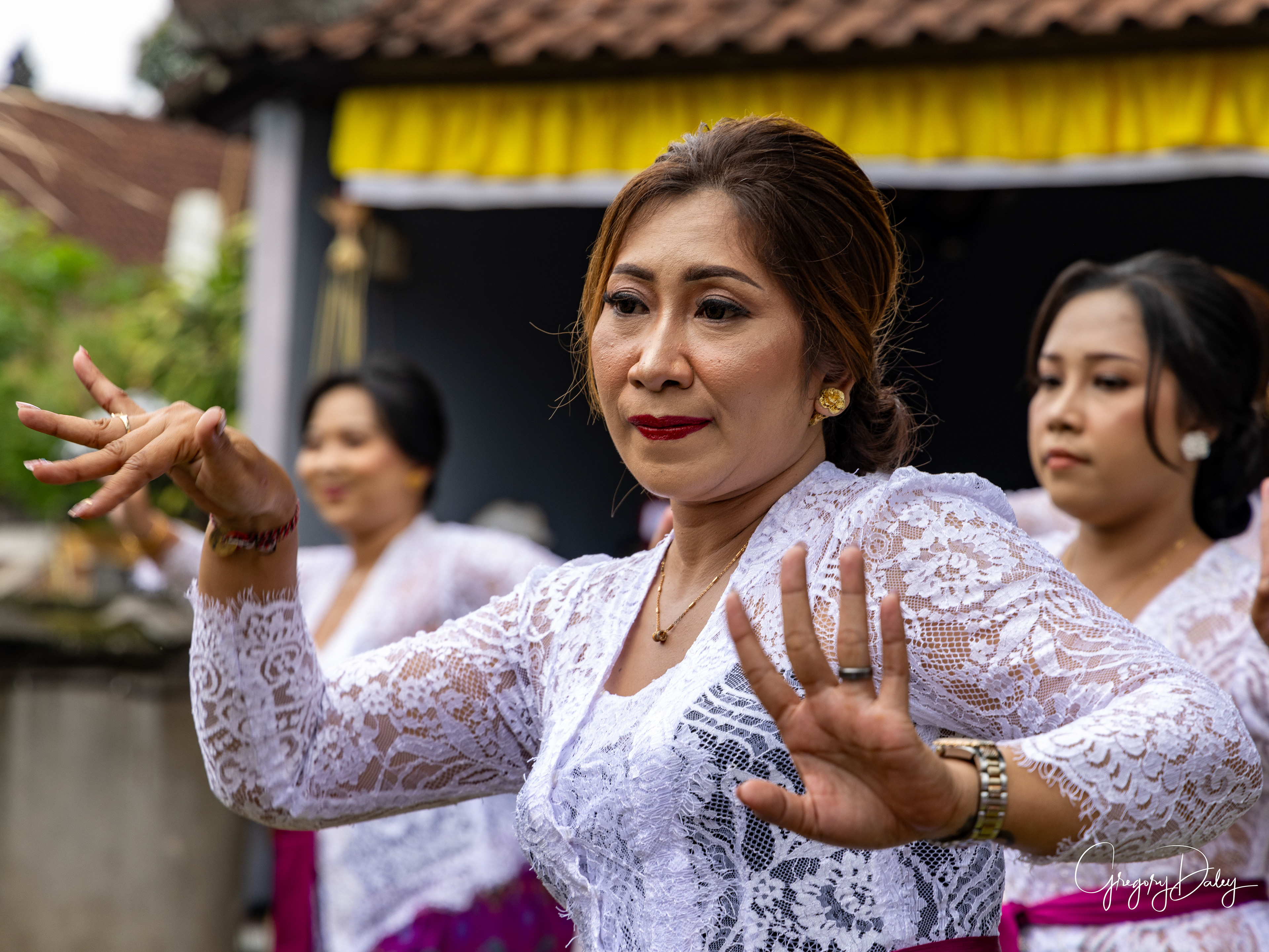
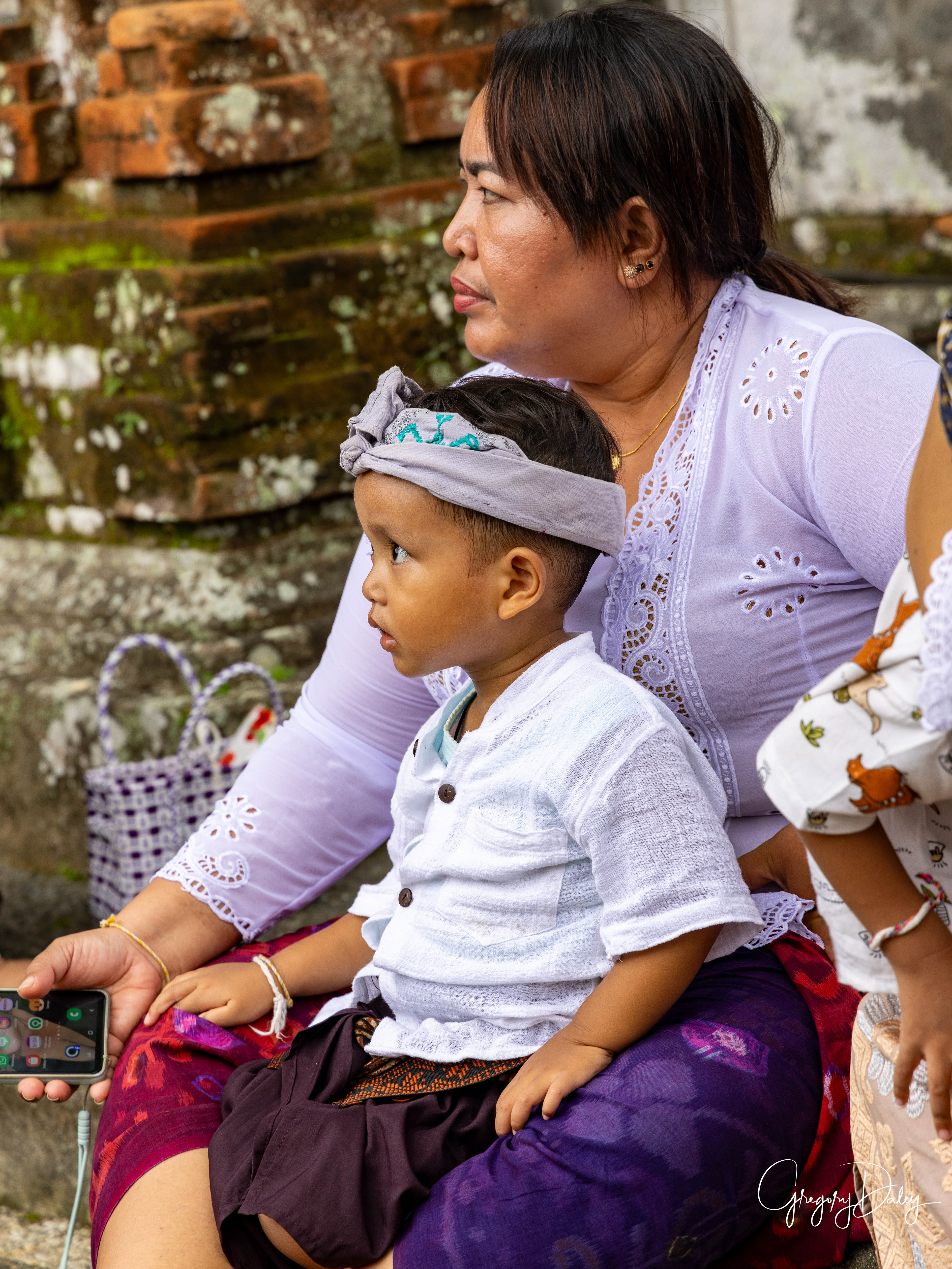
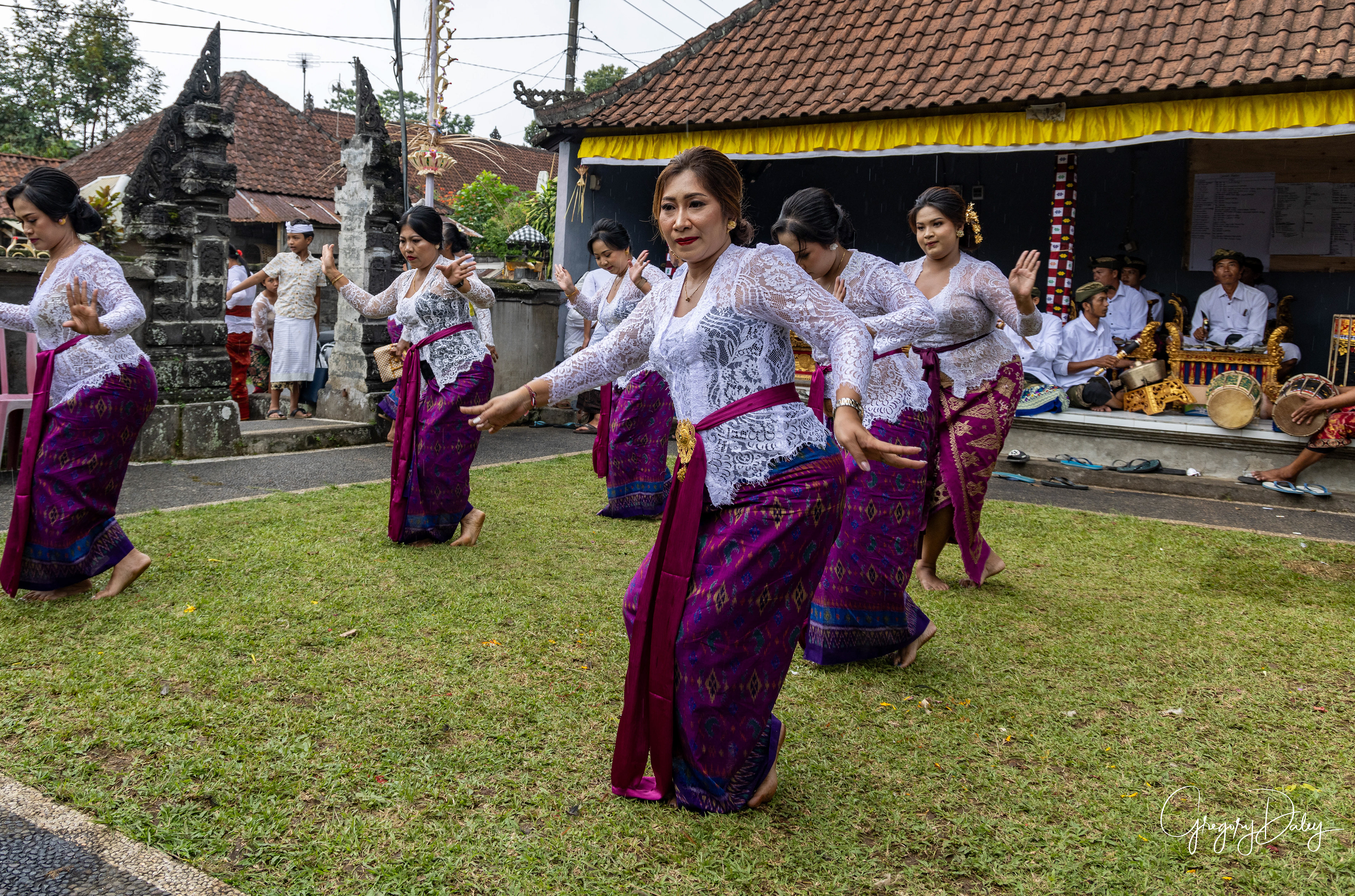
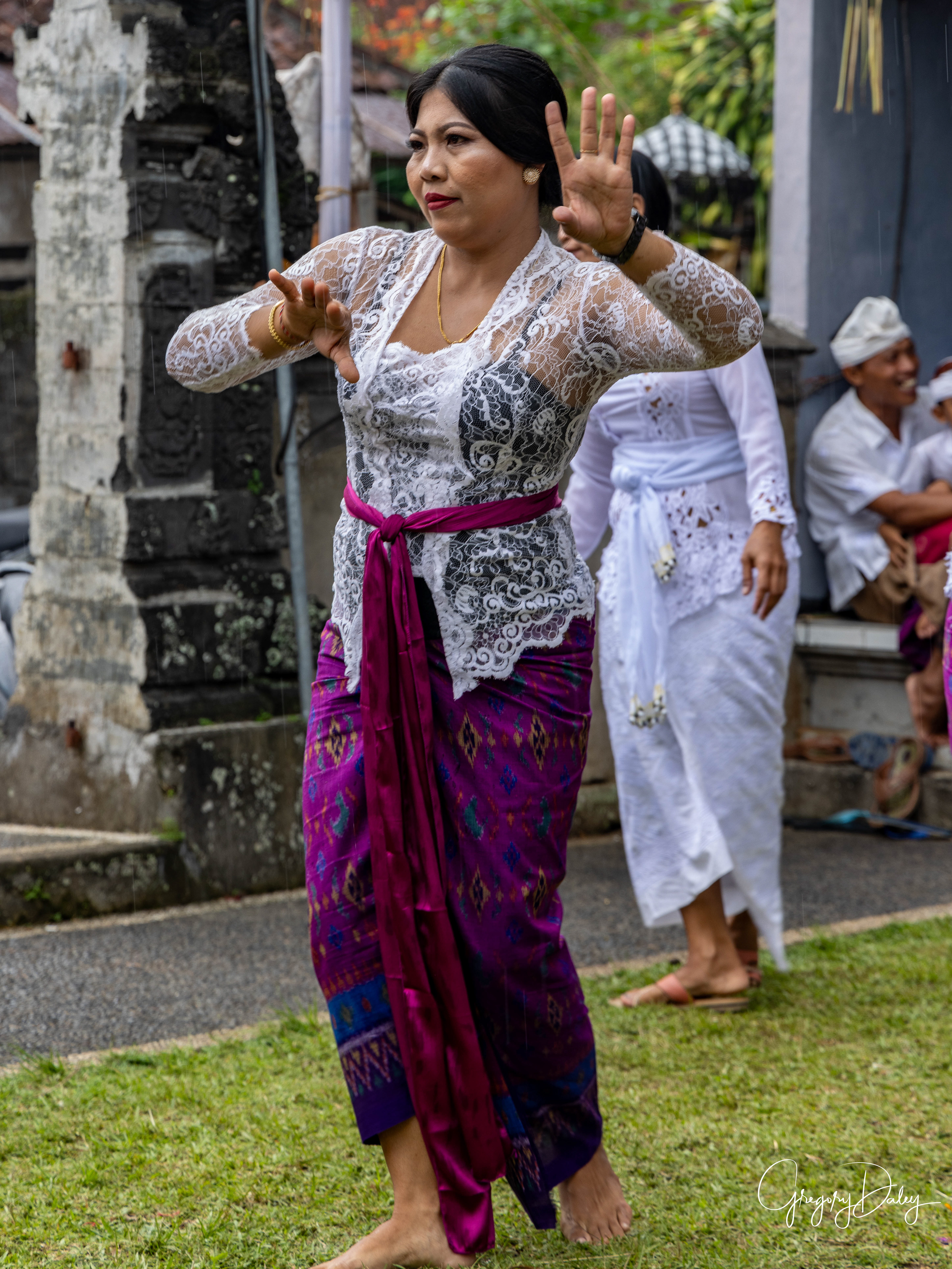
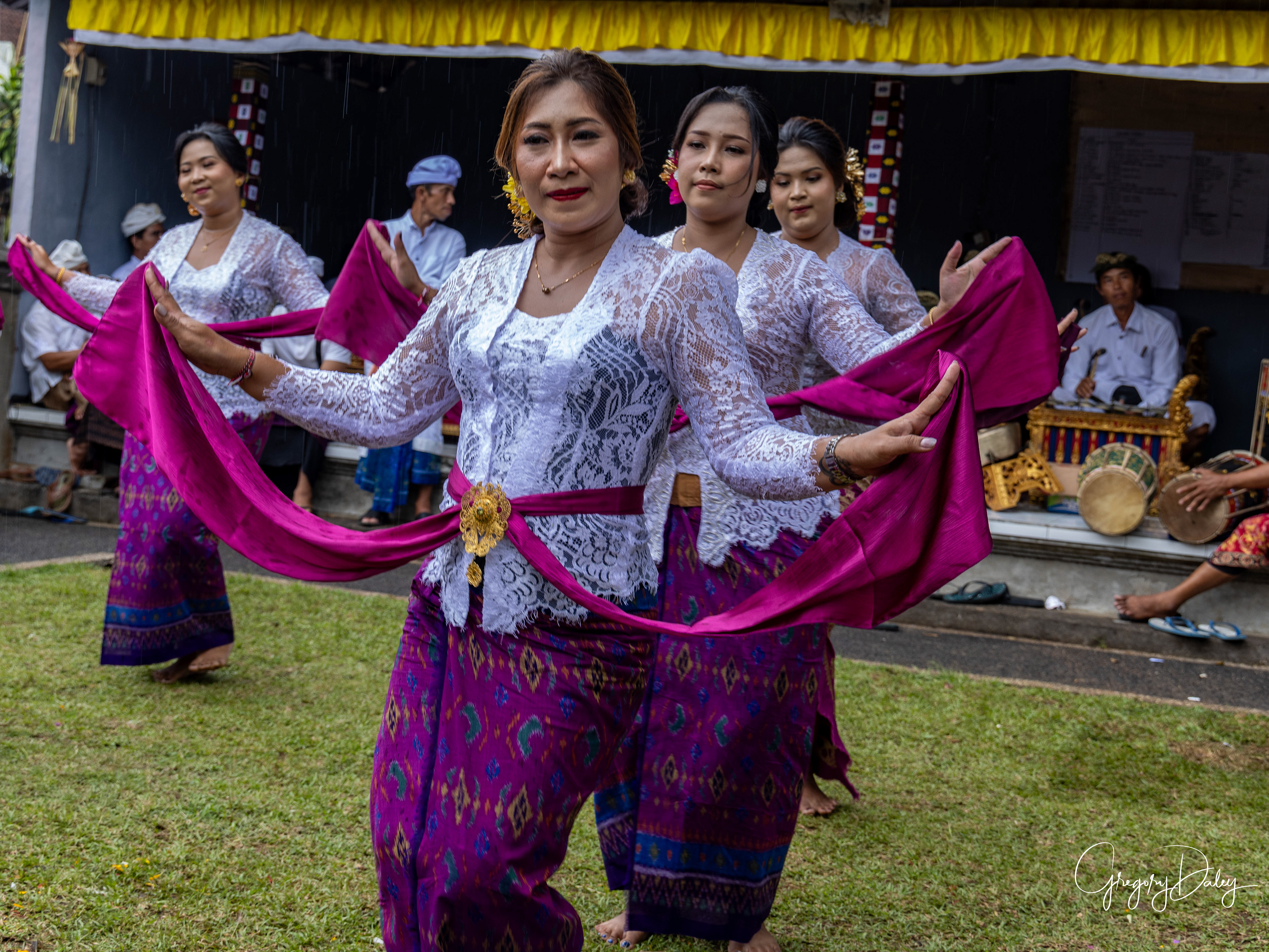
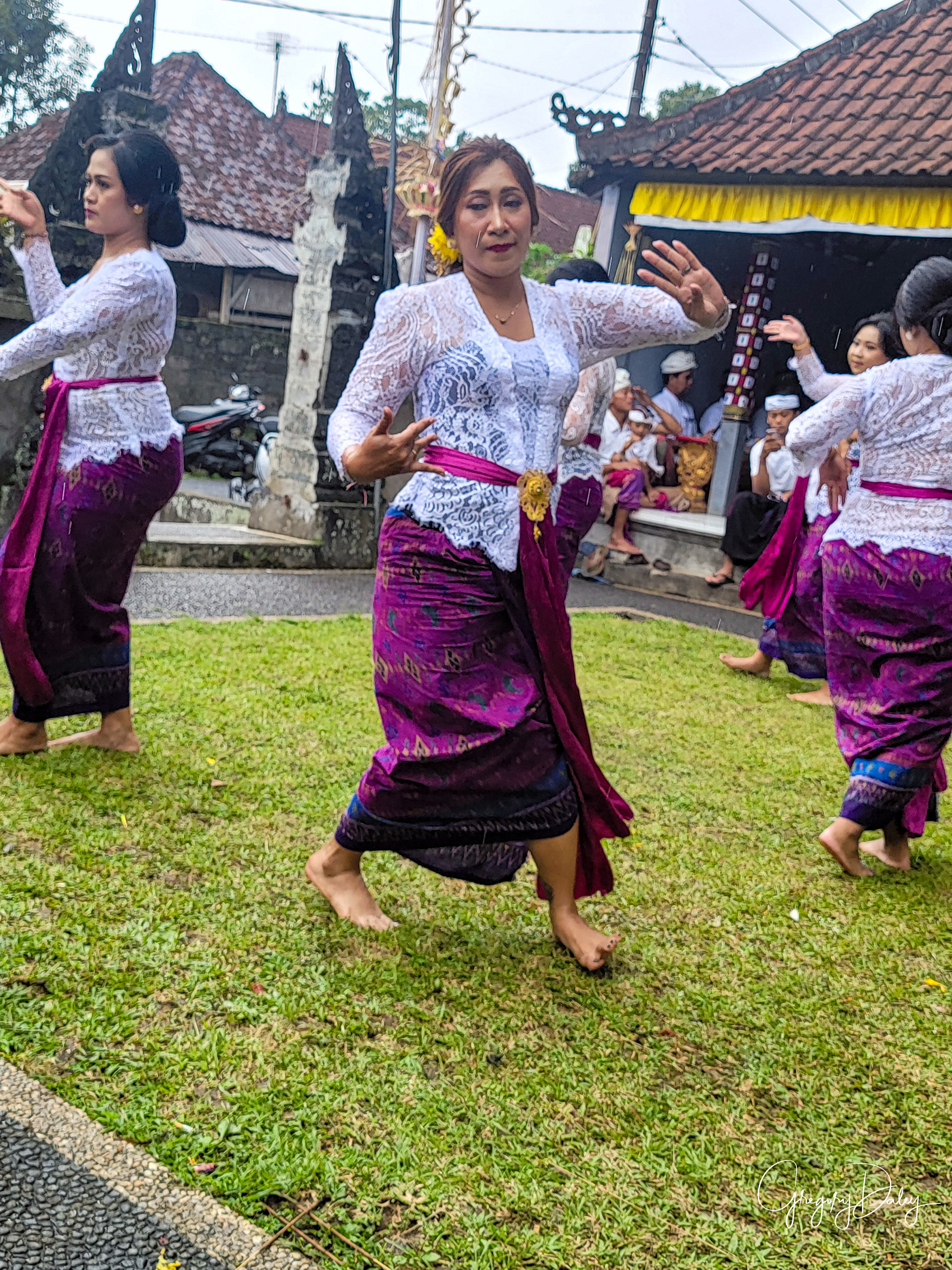
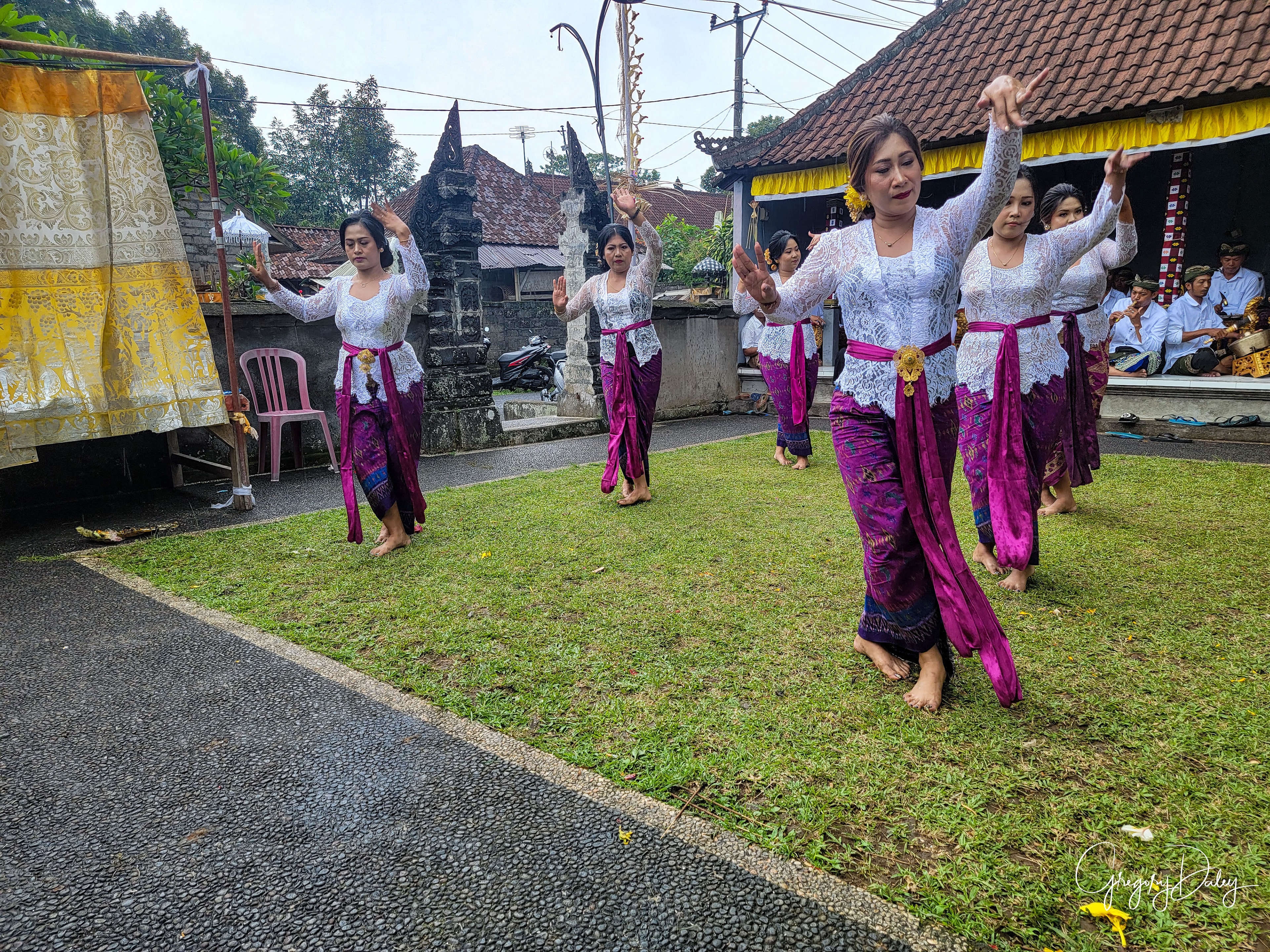
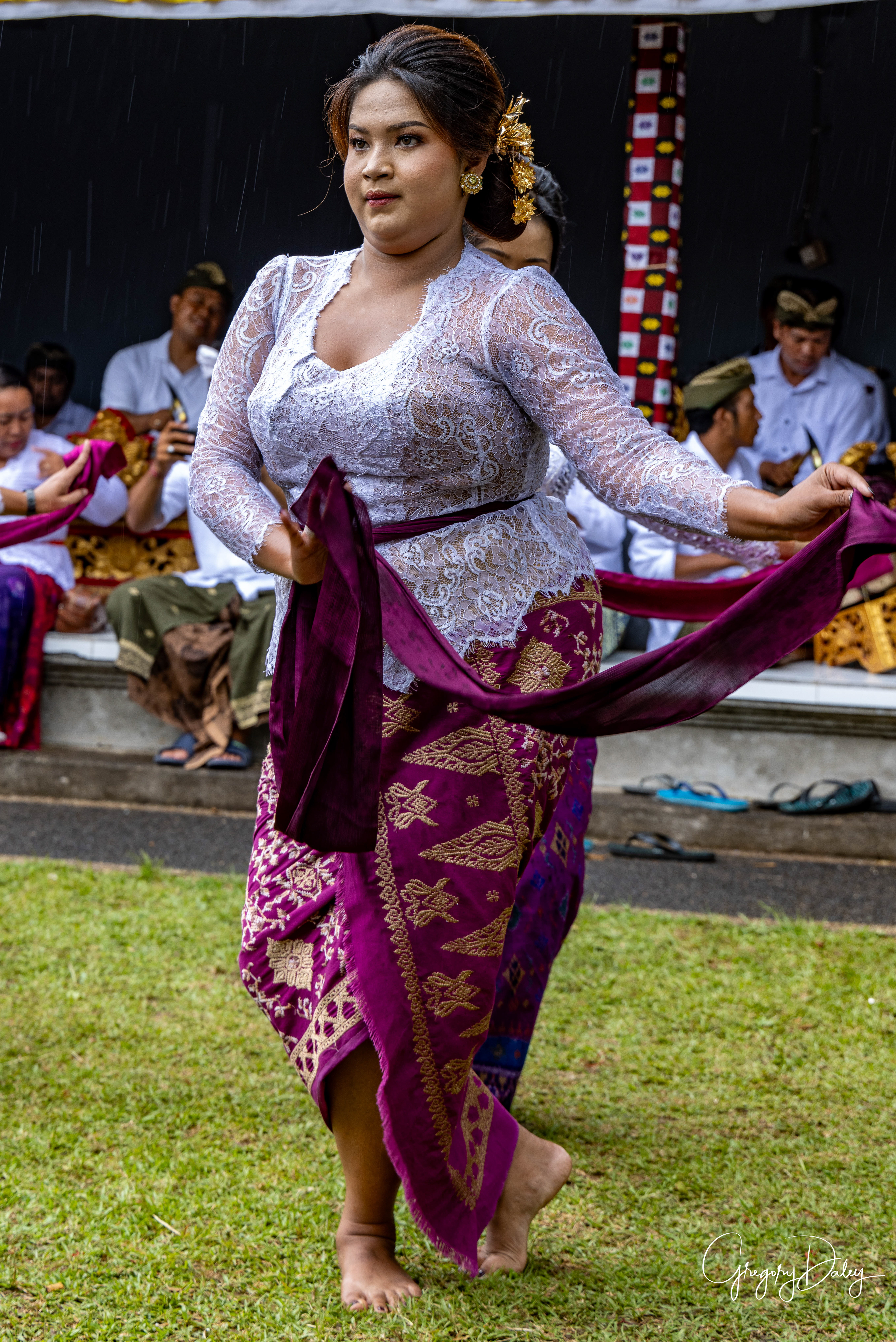
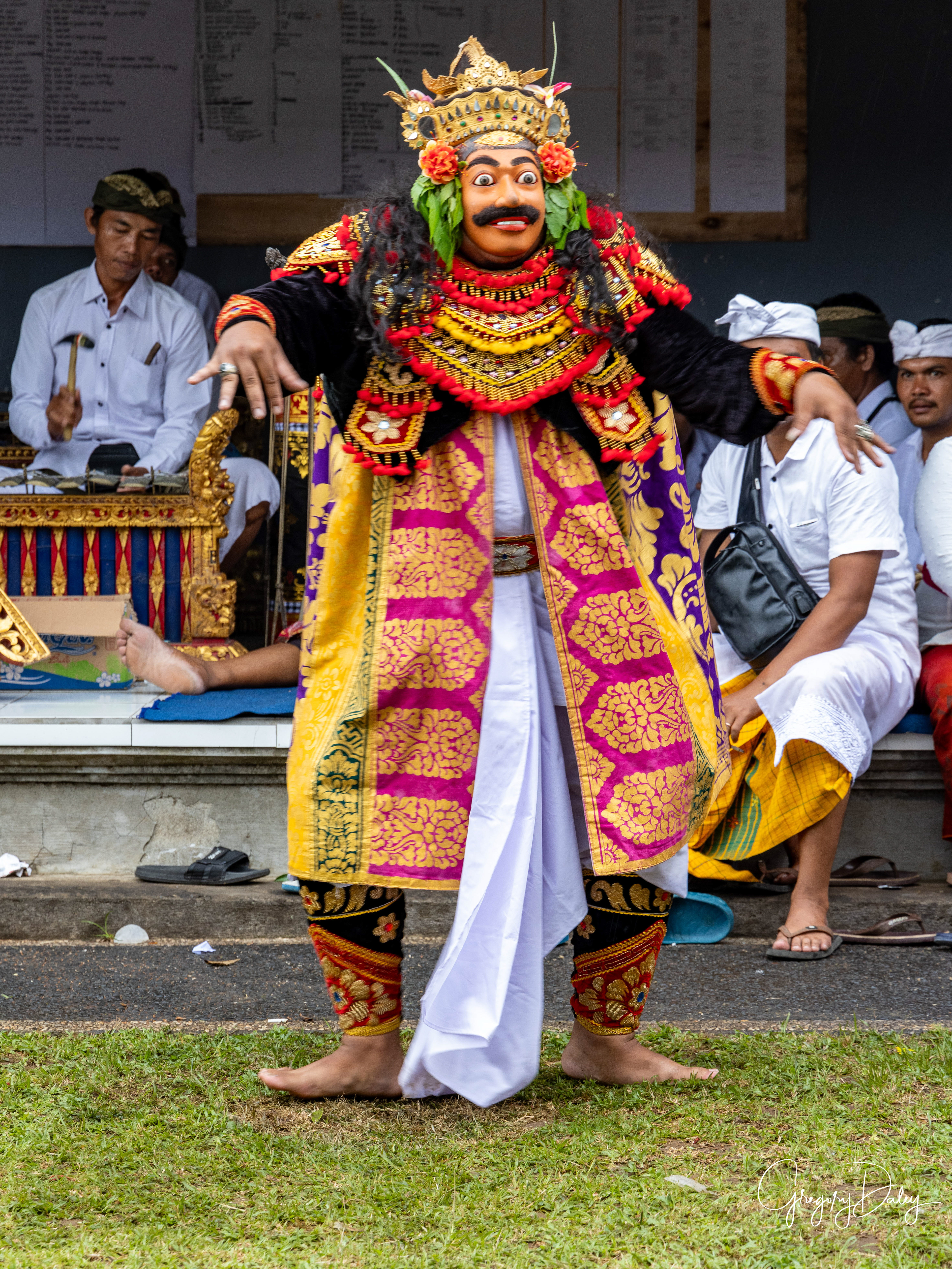
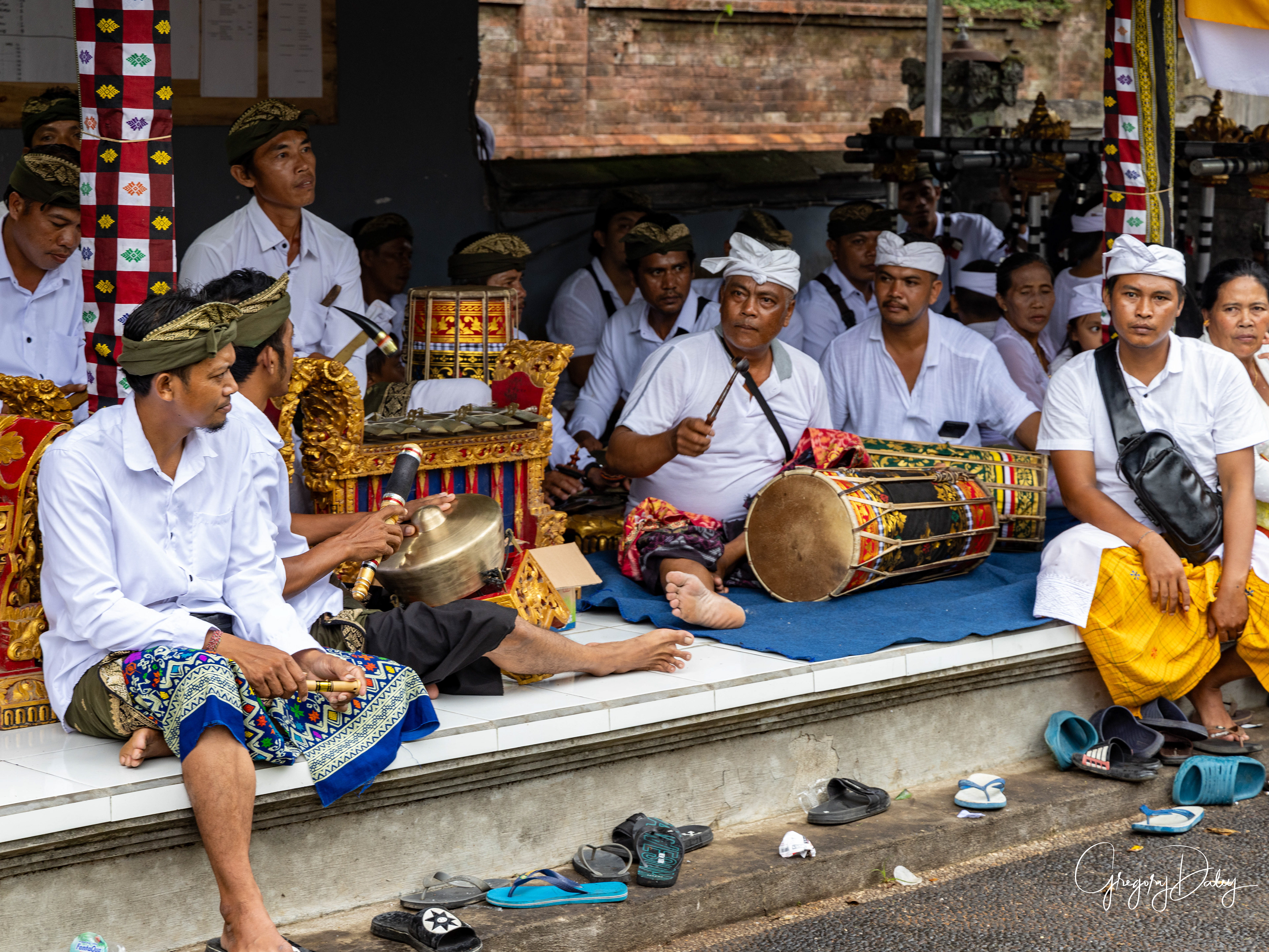
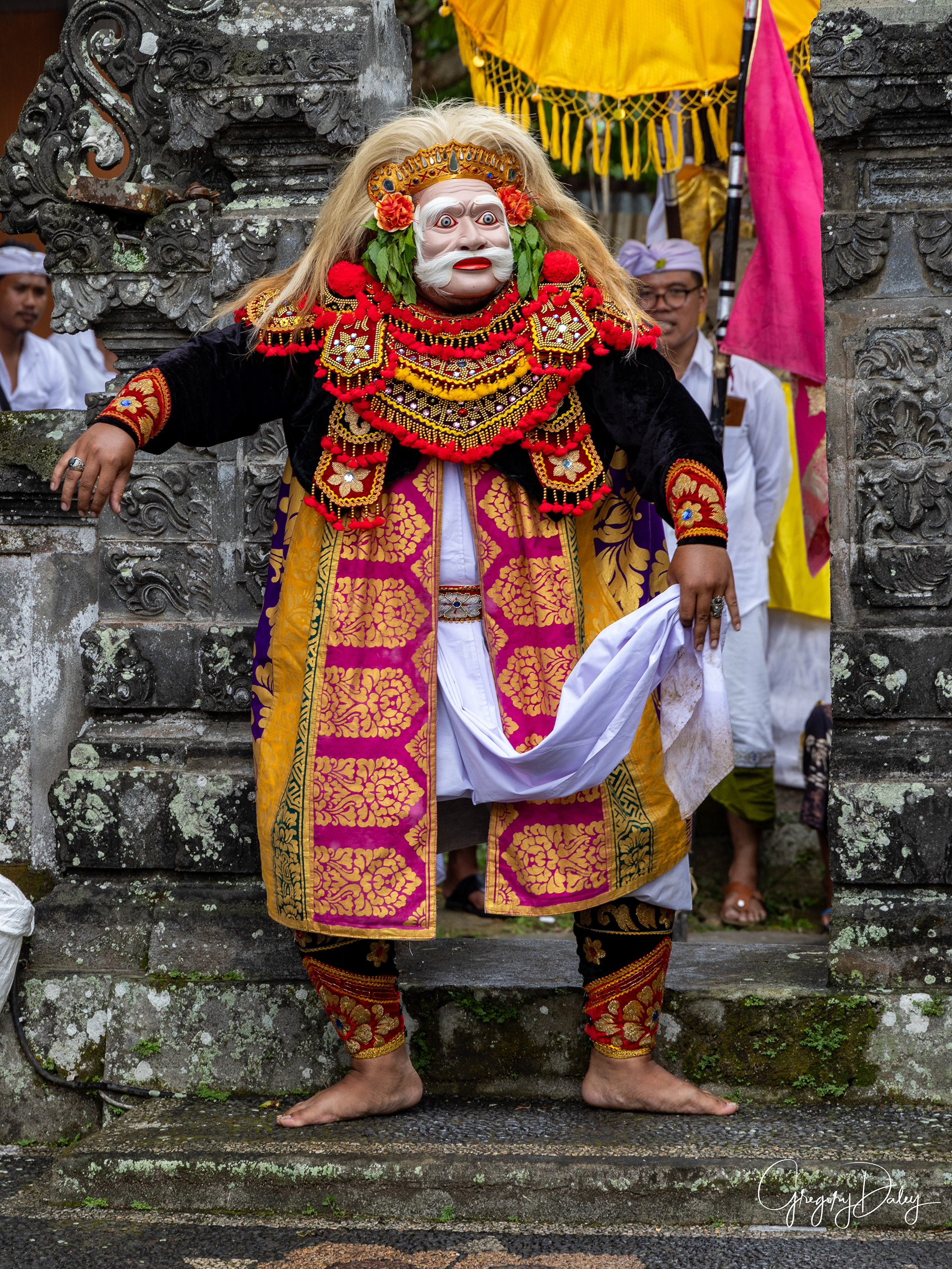
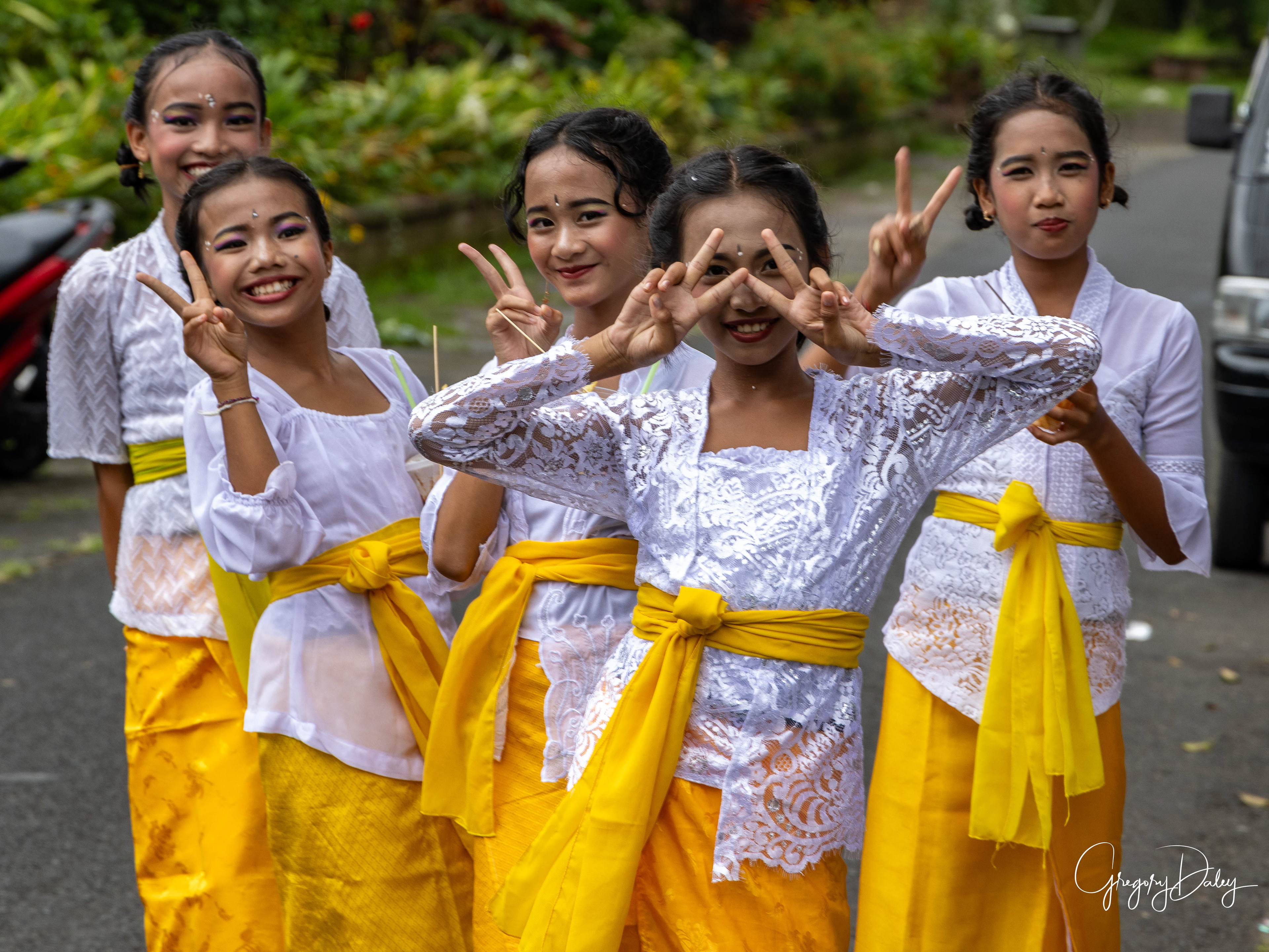
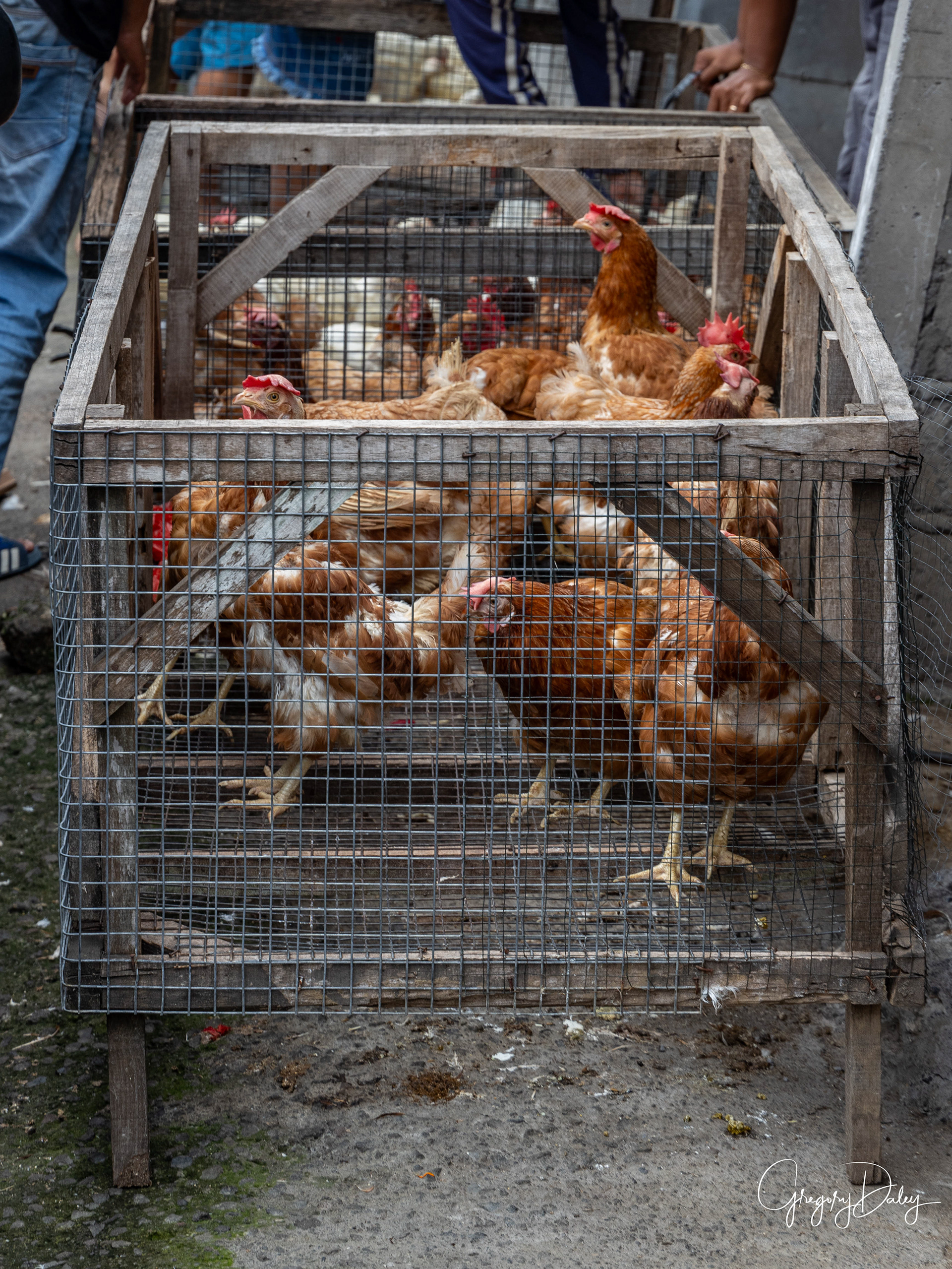
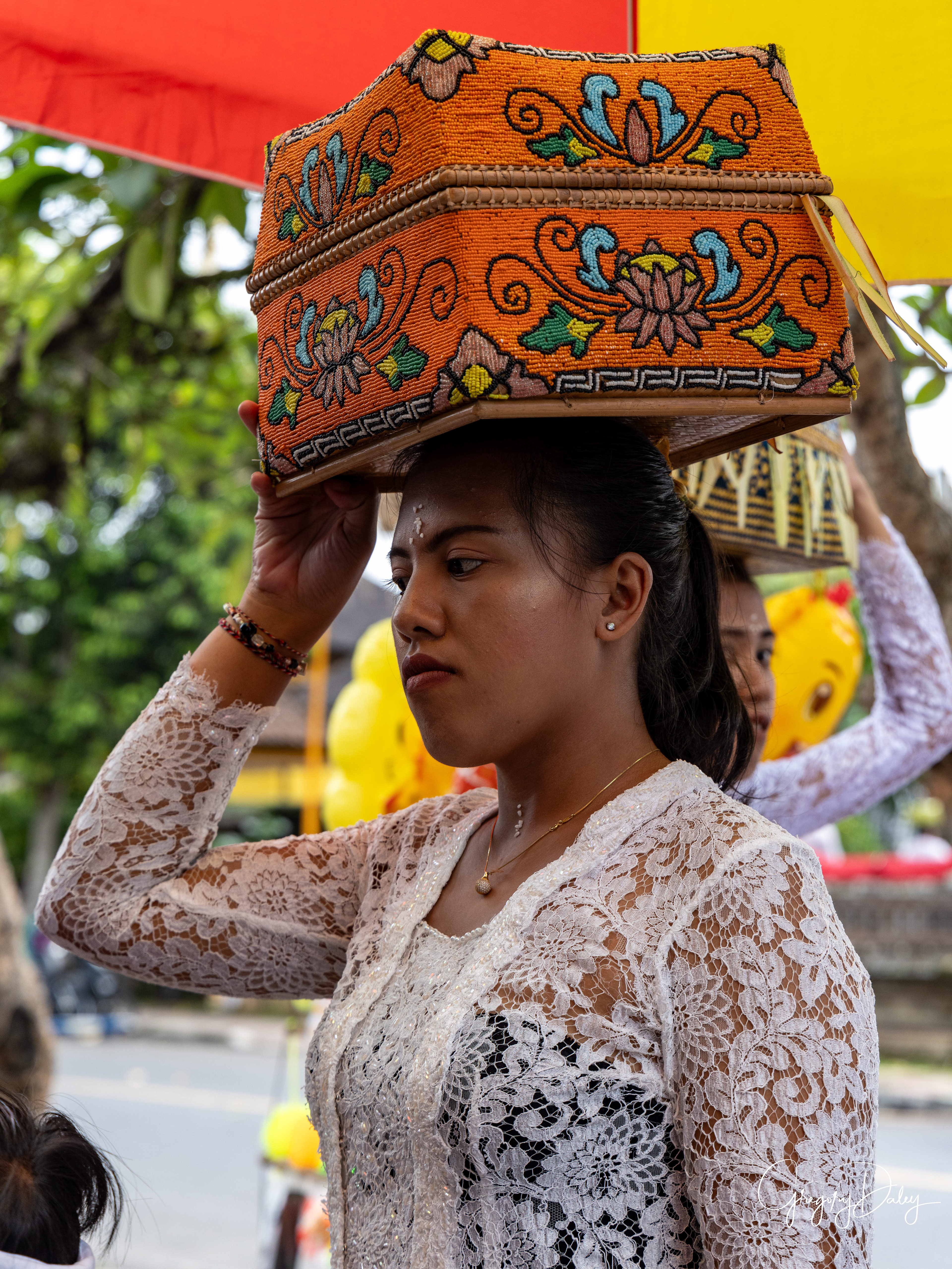

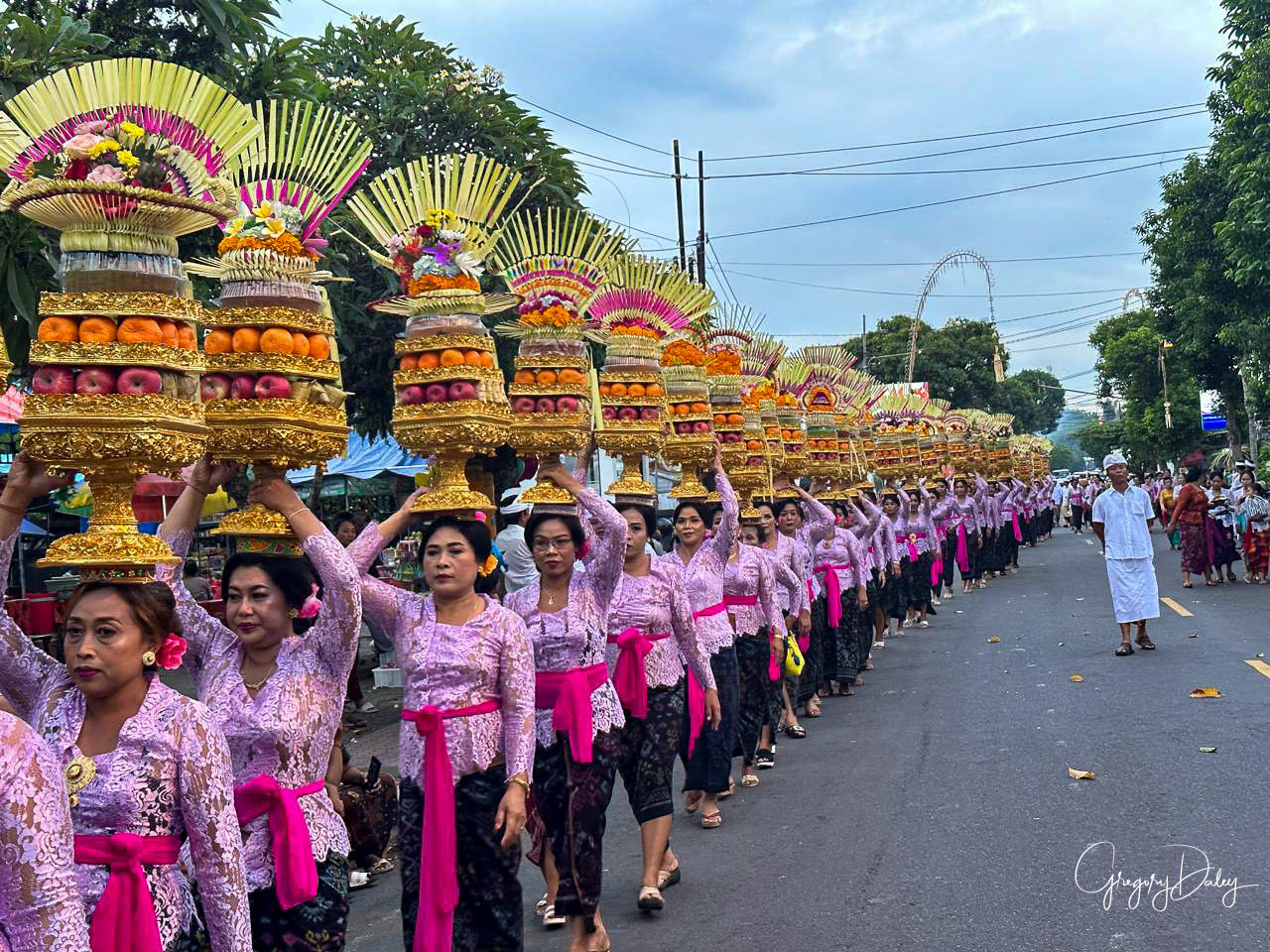
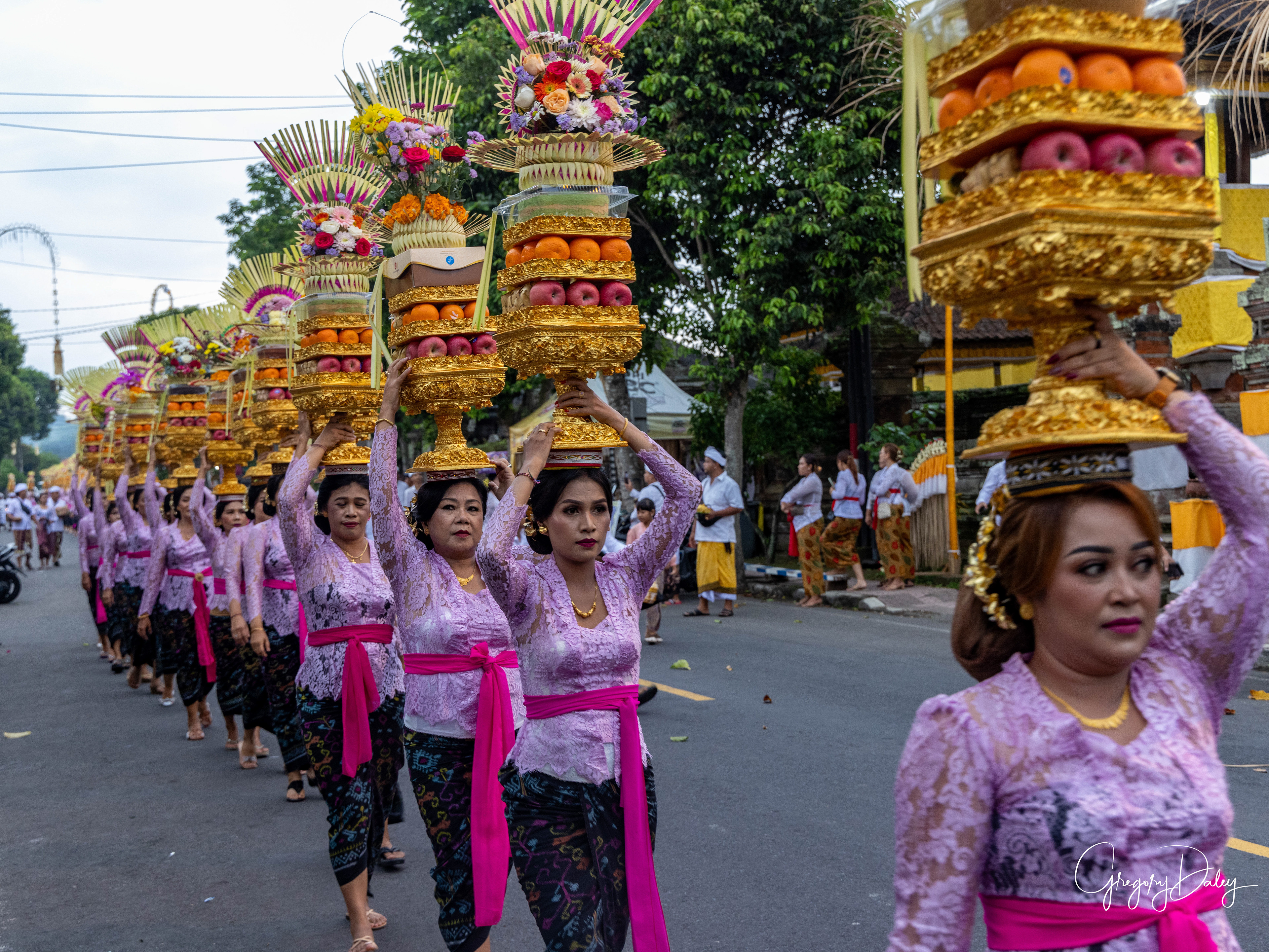
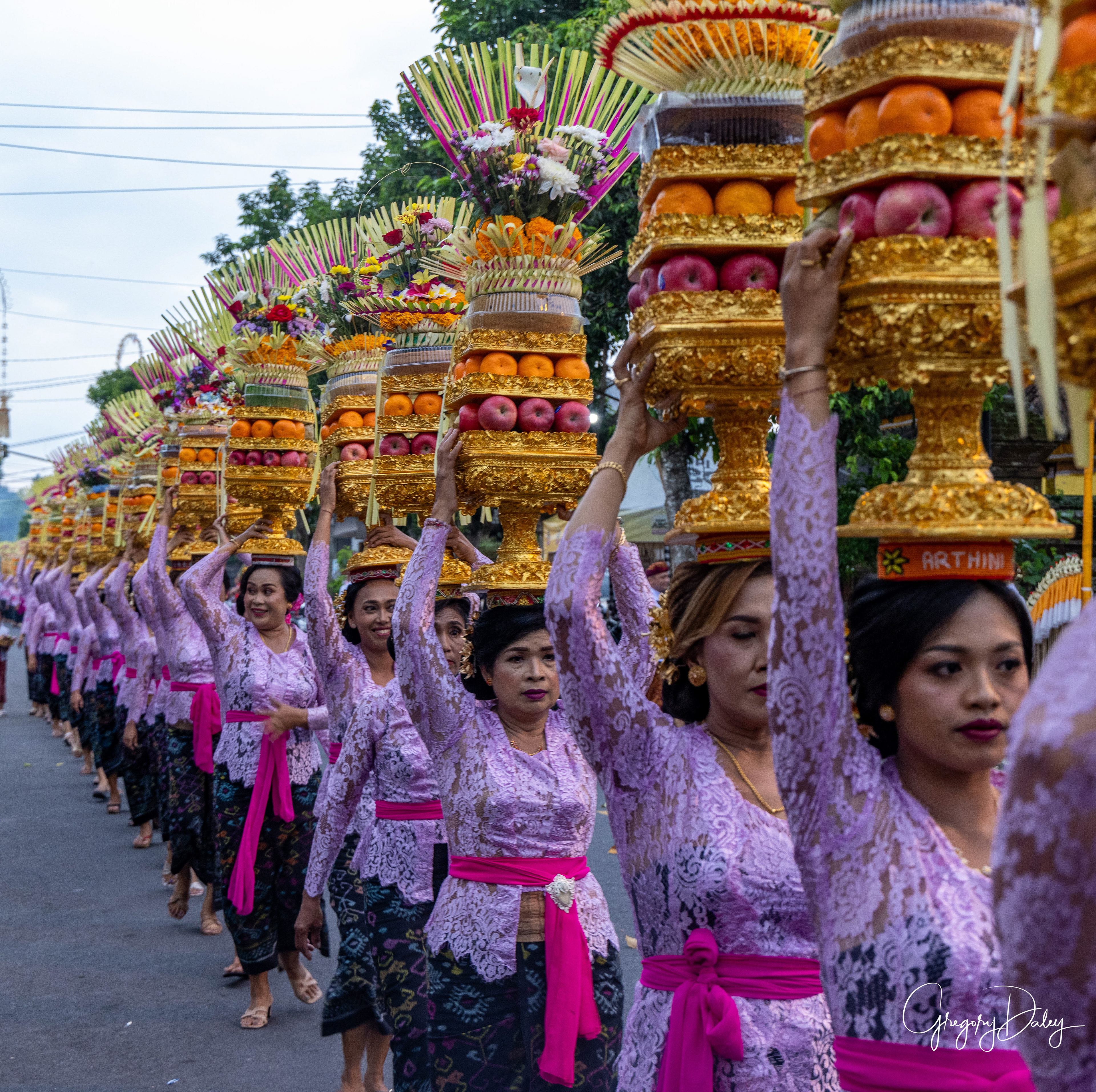

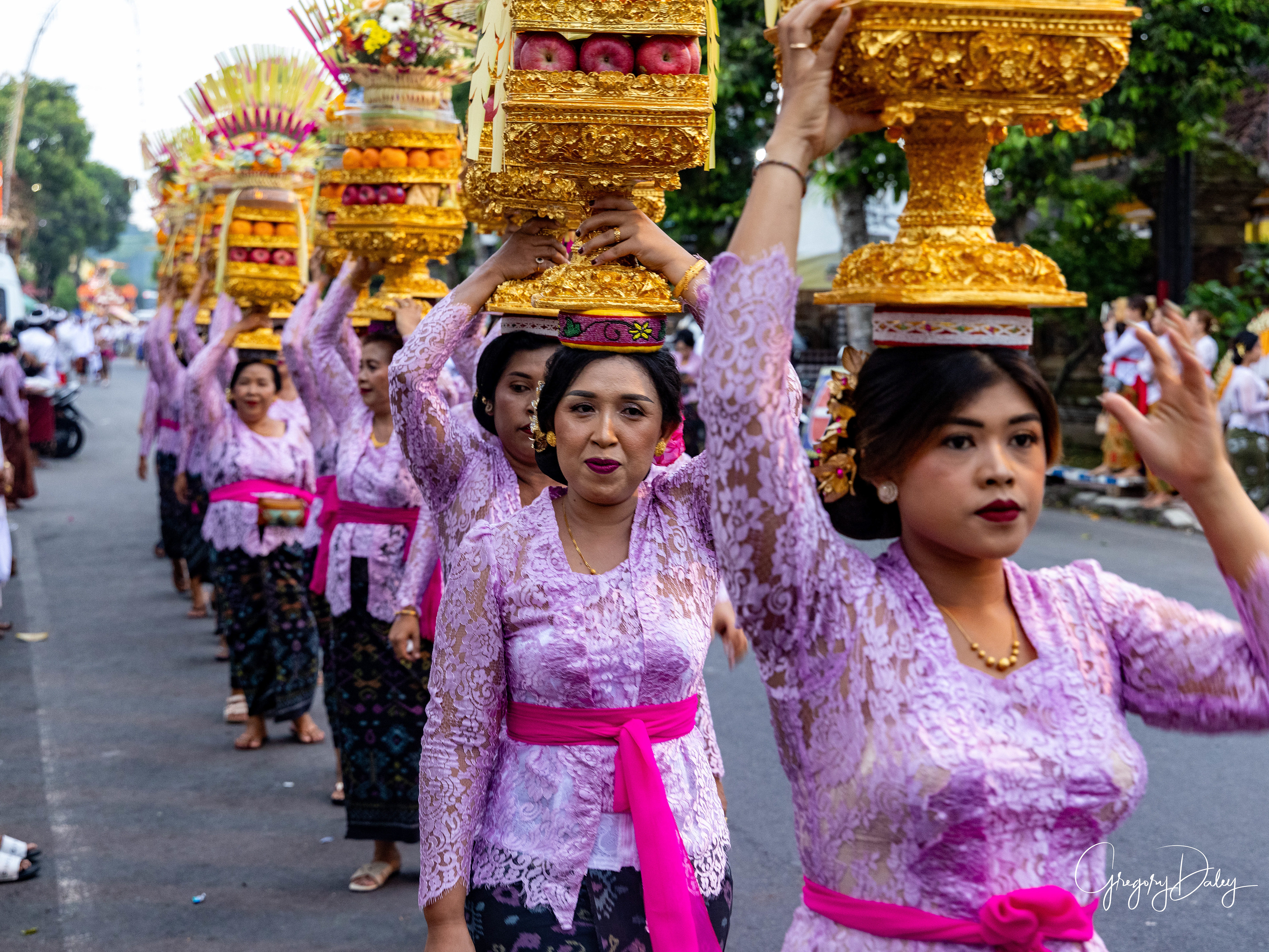

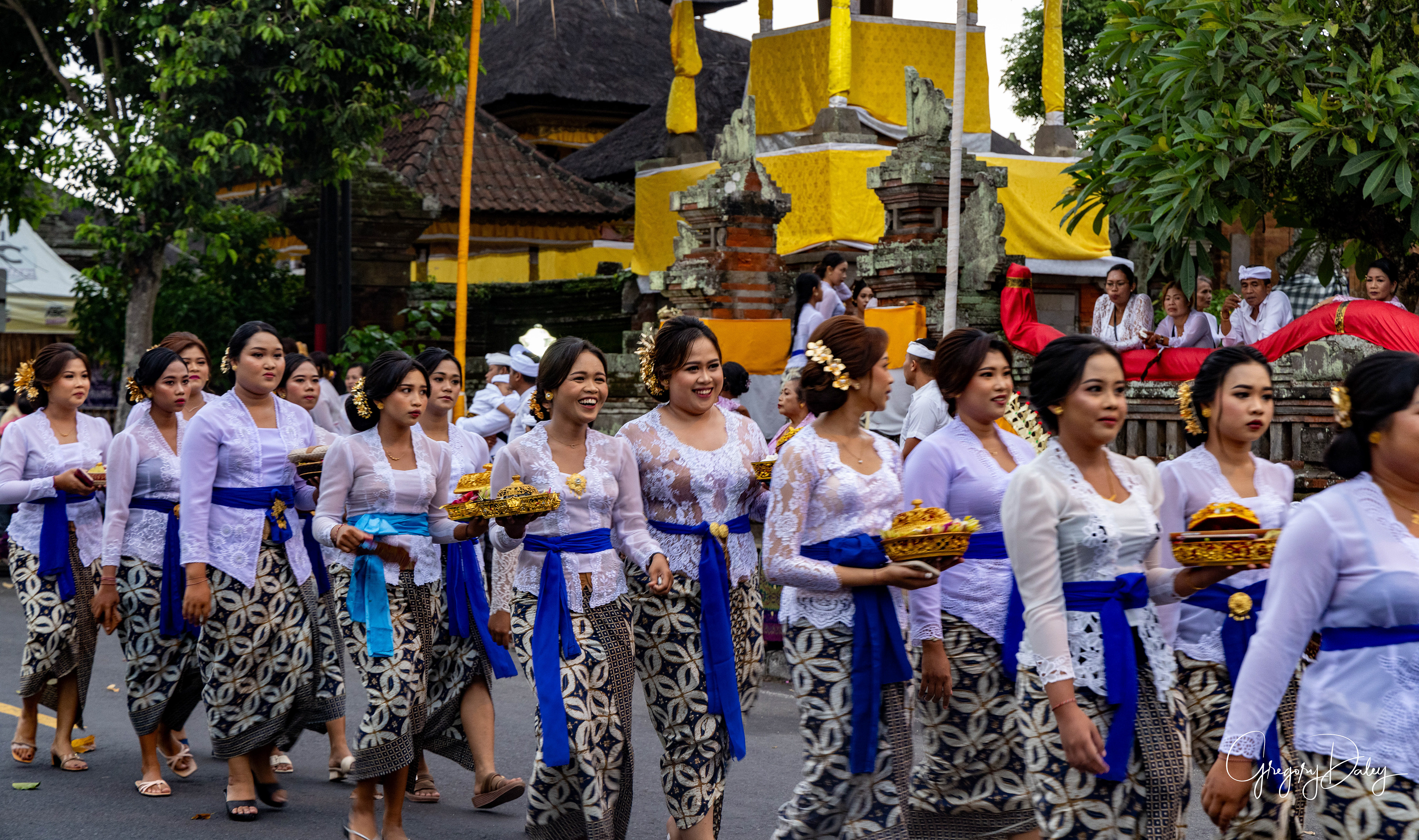
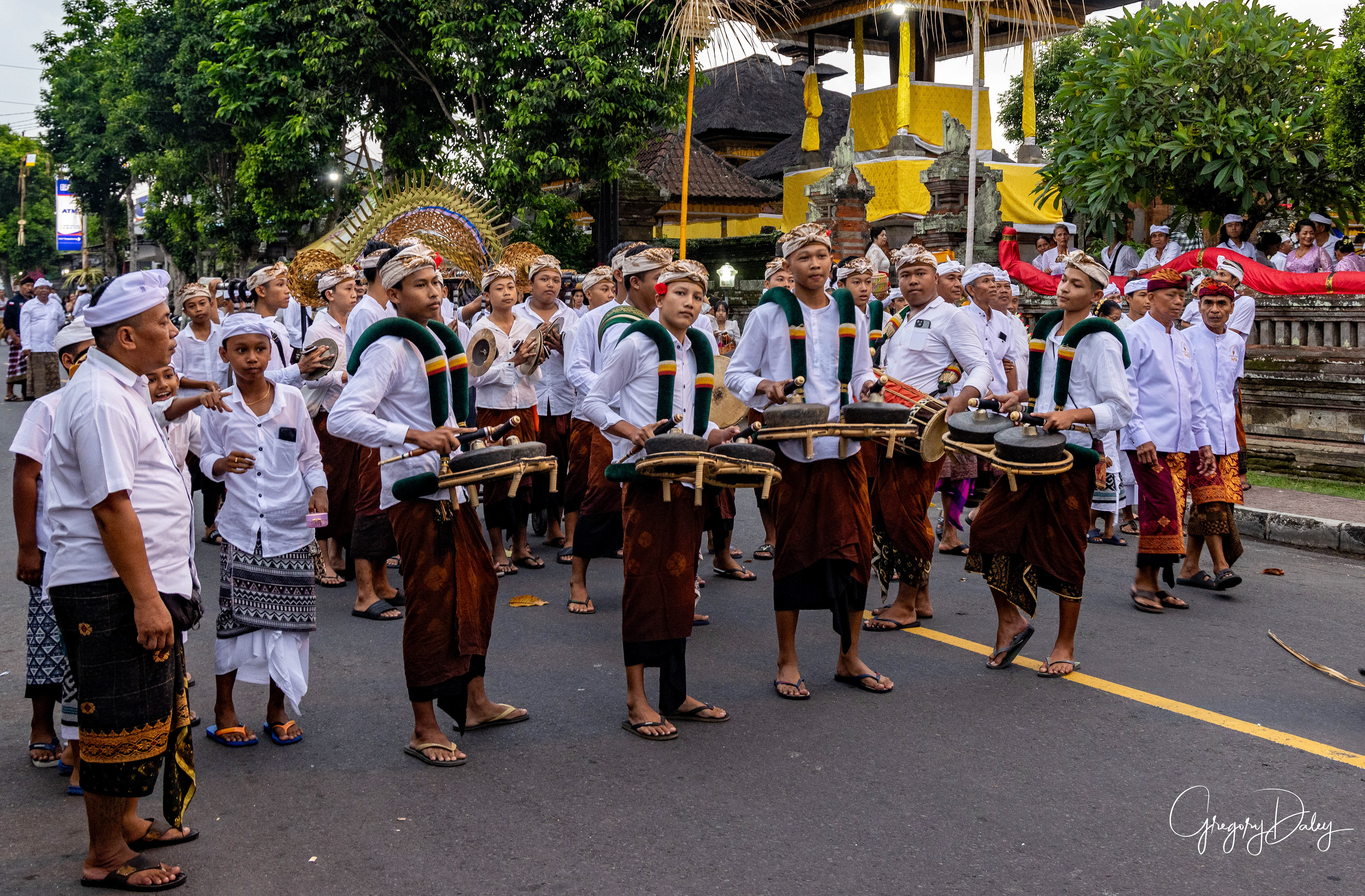
SACRED DANCES OF THE PURA DESA CEMADIK (TEMPLE)
While in Bali, Indonesia, it was such a privilege to witness the young girls of Pejeng Kangin village perform the sacred Balinese dance, the Rejeng Dewa, a sacrificial dance in which the girls offer themselves to the gods. “Rejang” means “offering”, a dance to greet the gods that come down to the Earth. This dance is part of the sacred offering ceremonies, which all happen around about the same time on Bali's ceremonial calendar.
The main occasion is arranged as a three-day ceremony at the village hall of Bale Agung. The dancers require no prior training, in a belief that the spirit of ngayah would guide them to perform the dance movements harmoniously. Girls as young as two or three can be included in the procession. The dance is also known as ngeremas, Simi or sutri.
The dance by the young boys is the Baros Gede dance. This is a war dance that depicts the Widyadara (warrior) who accompanies the gods.
The dance by the mothers is called the Renjang Renteng dance, one of rejang dances which is classified as a Balinese sacred dance. Usually it is staged in a series of dewa yadnya ceremonies such as piodalan or temple festival. This dance is thought to have existed around 1930, but its choreographer is unknown. This dance was then developed by the Cultural Service of the Province of Bali in 1999 by taking inspiration from the Beautifyue Renteng dance in Banjar Adat Saren, Mujaning Tembeling Village, Nusa Gede. In general, the Rejang Dance symbolizes a group of angel who came down to earth to welcome and guide Ida Bhatara (deities) at the self-purification ceremony in the yadnya ceremony held.
The movement of mendet or welcoming is the initial movement of the Rejang Renteng dance, and this is repeated. They dance facing the direction of the shrines, where the gods descend to earth. This dance movement resembles a straight back floor pattern with an odd number of rejang dancers. After that, they turn in a circle with simple movements that are repeated again and again until the last one goes to the outer courtyard of the temple.
The dance by the old men in costume and mask is called the Sida Karya dance. The name Sidakarya Mask Dance comes from two words, namely mask and Sidakarya. Mask comes from the word tup which means close. Sidakarya comes from the word "sida" which means to achieve, and "karya" which means goal or work. Sidakarya means achieving goals or completing work. The Sidakarya mask is also a symbol that the work or work held has been completed well. The mask dance is performed as an offering dance (wewalen) before the joint worship event led by the sulinggih. The goal, so that the ceremony that takes place can be held properly and safely and avoid all dangers. At the end of this dance, the dancer symbolically spends kepeng money and yellow rice (sekarura) as a symbol of blessings of perfection and prosperity.
The music is provided by the village Gamelan, the indigenous orchestra type of Bali, consisting largely of several varieties of gongs and various sets of tuned metal instruments that are struck with mallets. The gongs are either suspended vertically or, as with the knobbed-center, kettle-shaped gongs of the bonang, placed flat. Percussive melodic instruments include the bonang, the xylophone (gambang kayu), and various metallophones (instruments with a series of tuned metal plates, either suspended over a resonance trough or on resonance tubes). A sustained melody is played either by the bamboo flute (suling) or by a bowed stringed instrument (rebab).
PYRAMID OFFERINGS - PURA PENATARAN SASIH
Hundreds of mothers from the Banya Pande Pejeng village carry offerings on their heads shaped like a pyramid to be blessed at the Pura Penatarn Sasih Temple (the moon temple), is an ancient temple located inside the village of Pekutatan, in the Badung Regency. This temple is dedicated to Lord Vishnu, one of the three gods in the Hindu trinity. The temple is said to be built sometime during the fourteenth century, though very few records remain on its original construction. This temple is known for its unique architectural style, which consists of both Indonesian and Indian influences. Pura Penataran Sasih Temple is a popular pilgrimage site for Hindu devotees from around the world and is also the most recognizable temple in Bali. It is one of the best temple in Bali.
1. Pura Penataran Sasih is an 11th century Hindu temple located in the village of Pejeng, Ubud, Bali, Indonesia. 2. It is a complex of three interconnected temples, Balinese Hindus believe the temple complex to have been established by Wisnu Sakti Sang Daksina. 3. It is a temple of spiritual significance, especially to Bali Hindus as it is said to be the sanctuary of truth and incarnation. 4. Other than that, the temple is popular for its impressive bronze kettle gong, known as Bedug and believed to be sacred objects of great value to the Balinese Hindus. 5. The temple is the largest existing megalithic temple complex, used for ceremonies of rebirth and cremation 6. Inside the complex, the temple's five gateways symbolize the balance of nature, four directions, and the fifth element, the soul. Here are some facts about the Bali temple.
The worship method at the Pura Penataran Sasih Temple in Bali is based on the island’s traditional Hindu rituals. During worship, devotees offer prayers and offerings such as flowers and incense to the gods in the temple. The temple priests offer blessings to the devotees, pray for their desires, and perform various cleansing rituals. They do so by chanting mantras, ringing bells, and burning incense. Additionally, offerings of money and food are also given to the deities. Participants may also join in various rituals and ceremonies such as processions, marches, washing ceremonies, and barong dances. These activities are important as they demonstrate devotion to the gods and help to bring the local community closer together.
Once blessed the food is returned home for the family to consume.